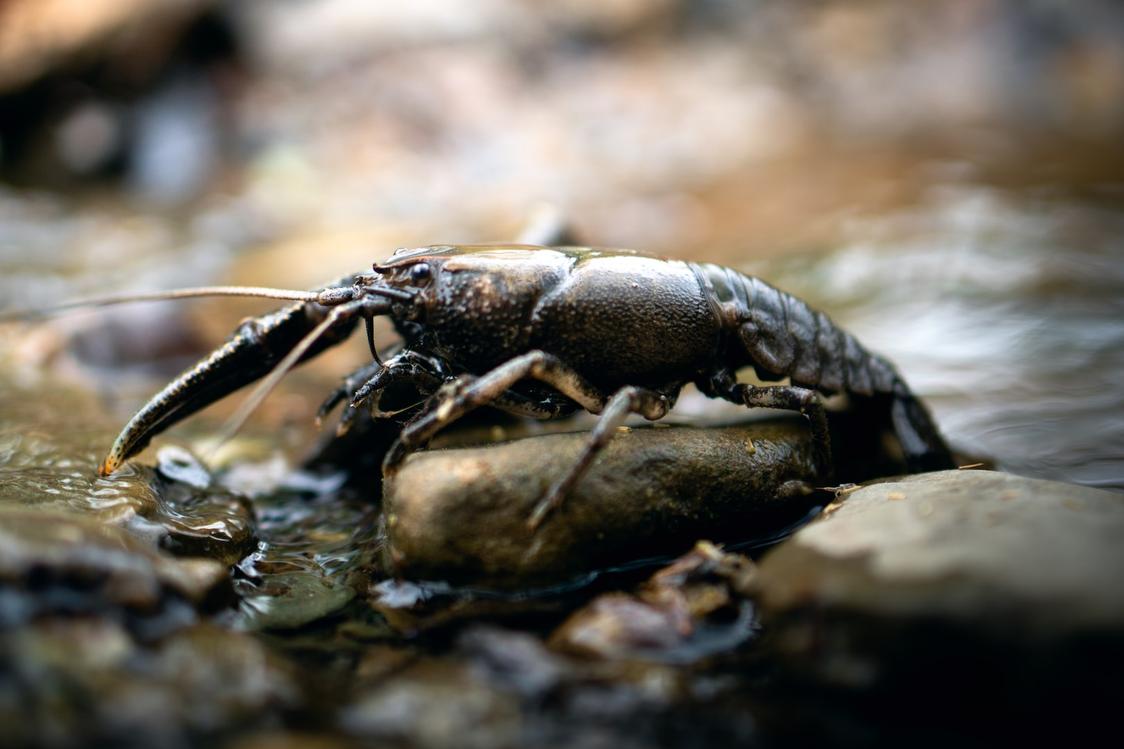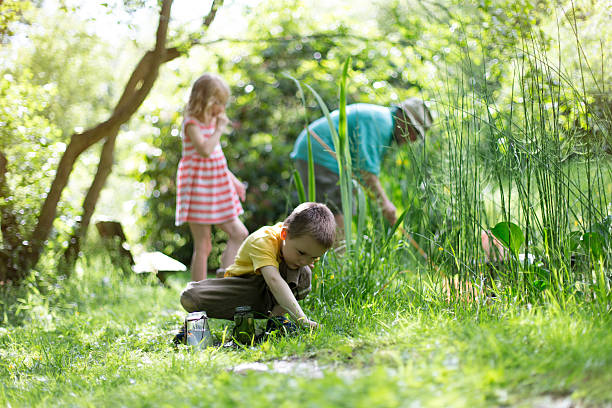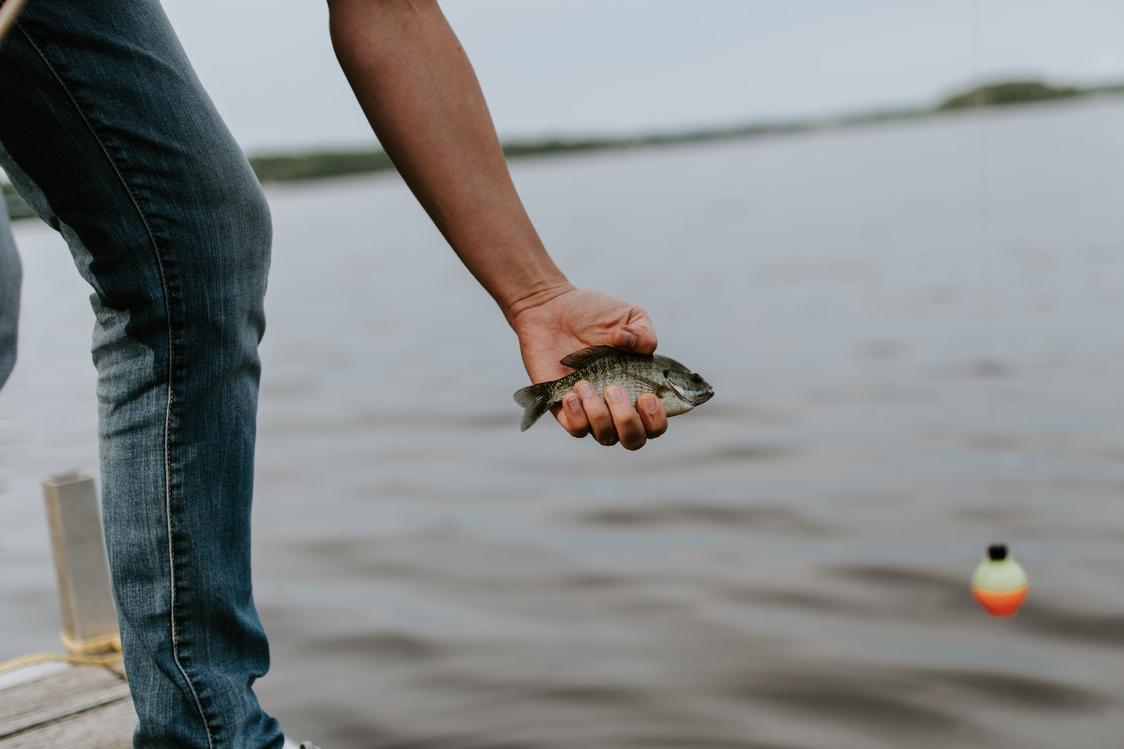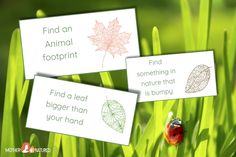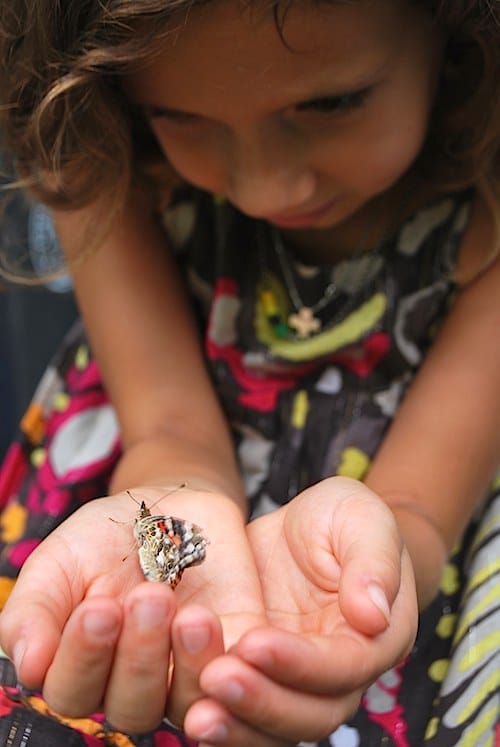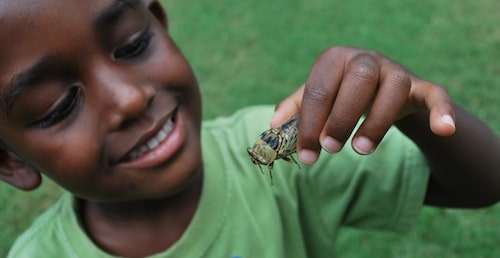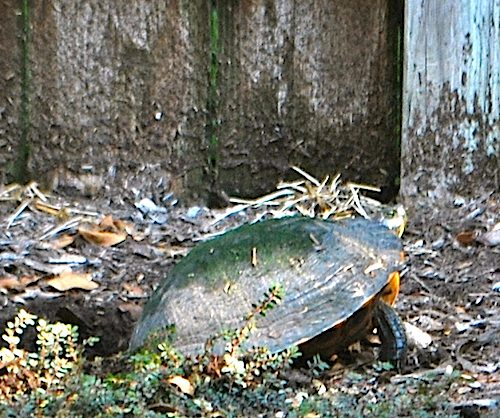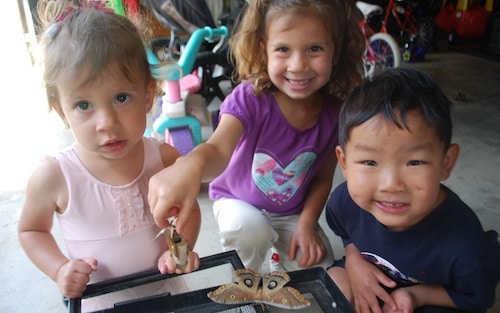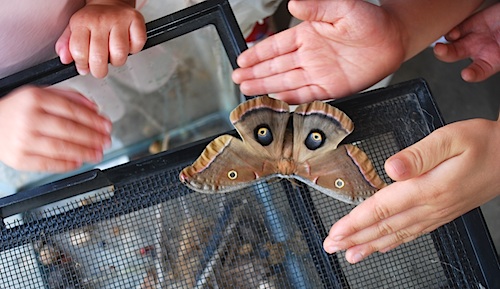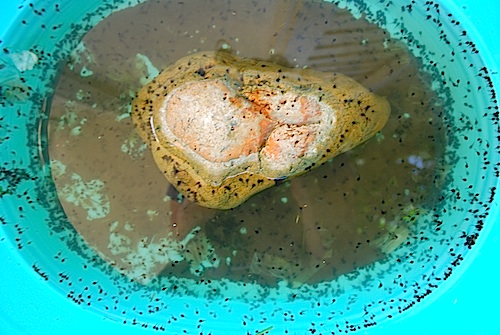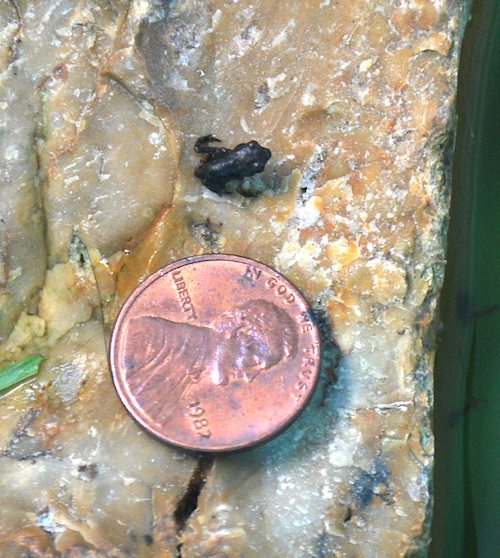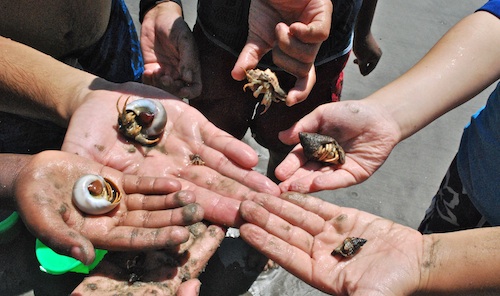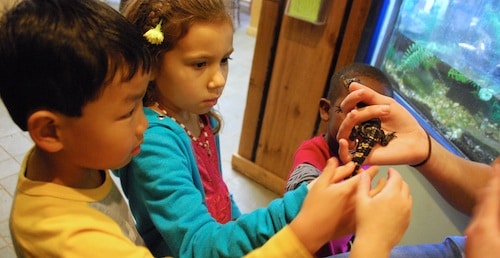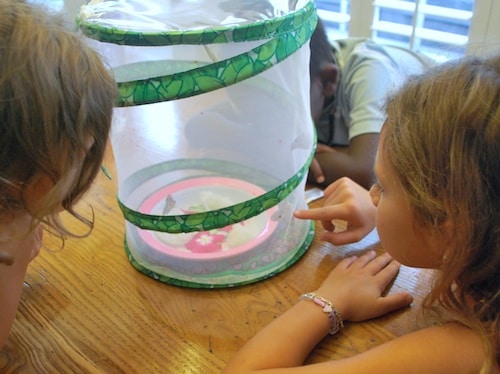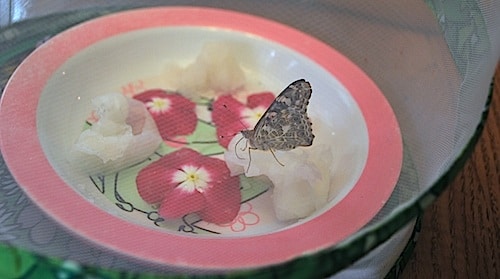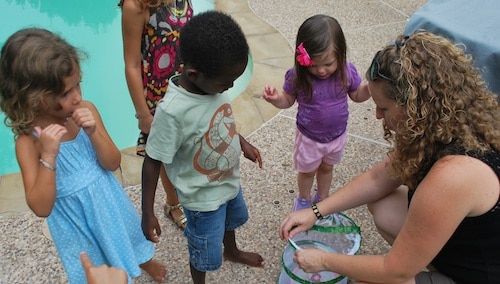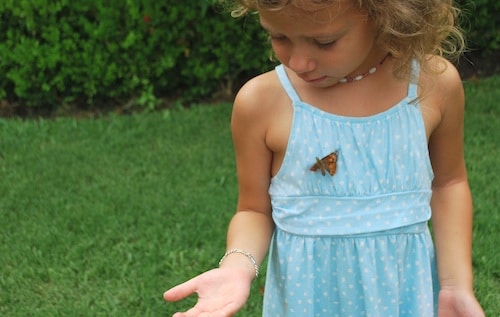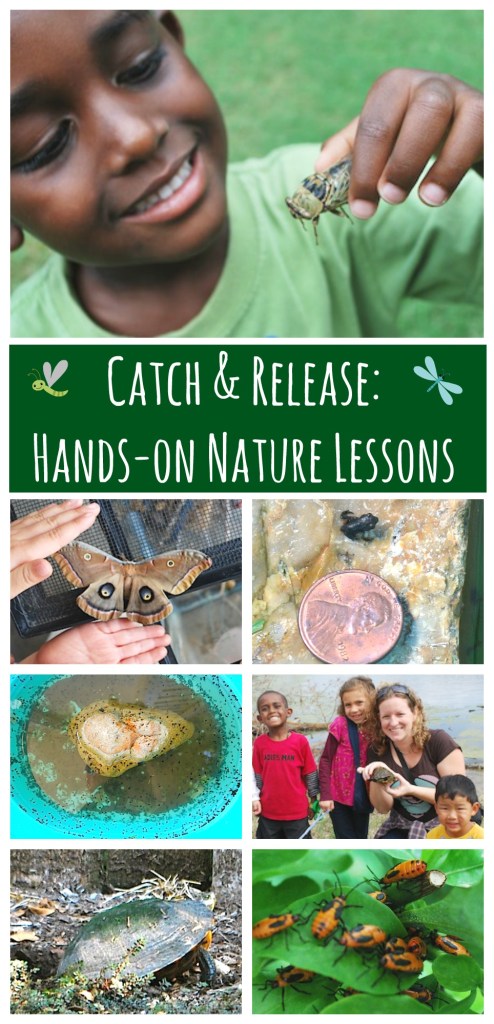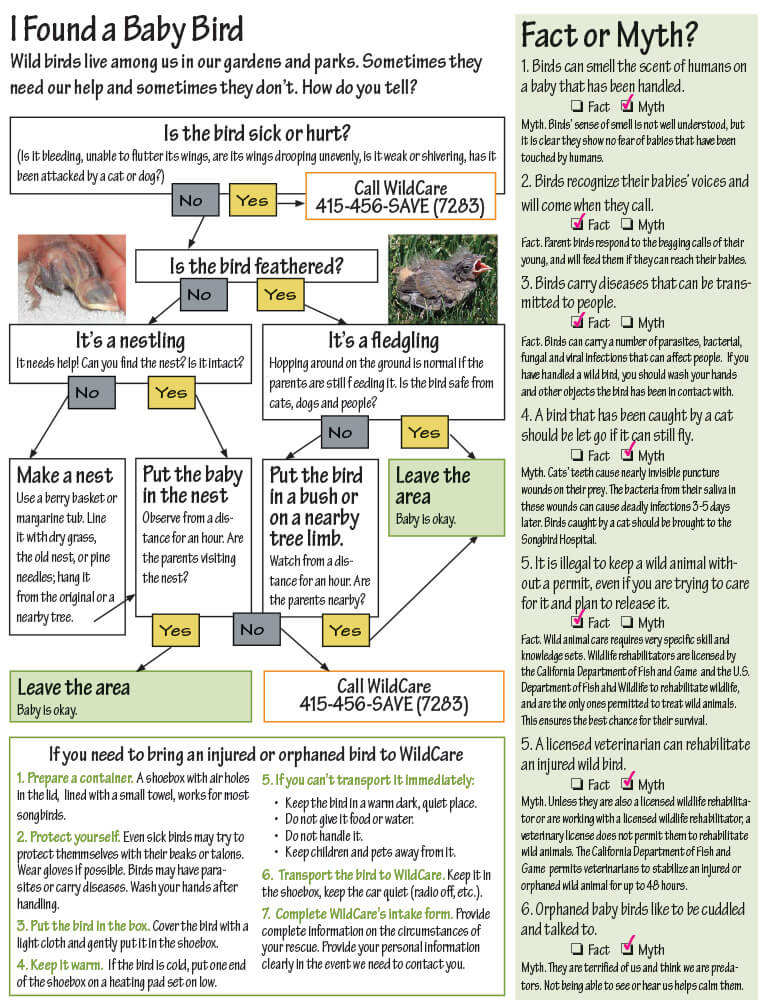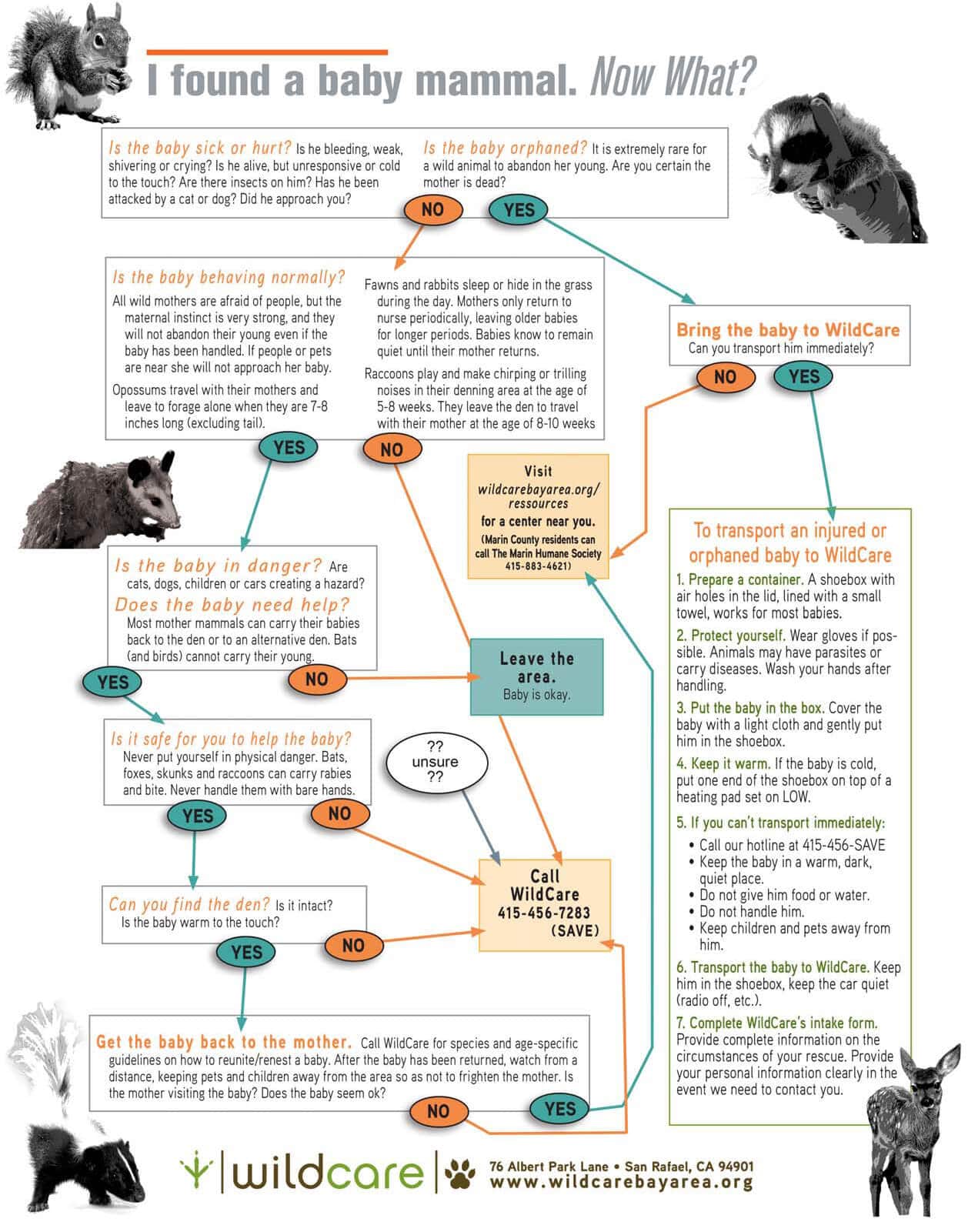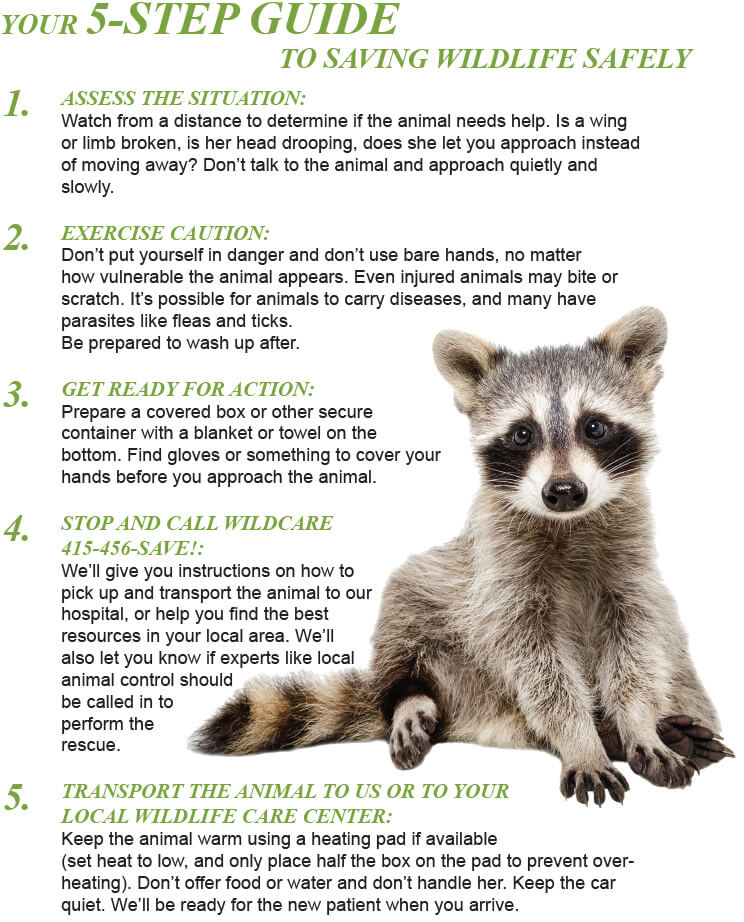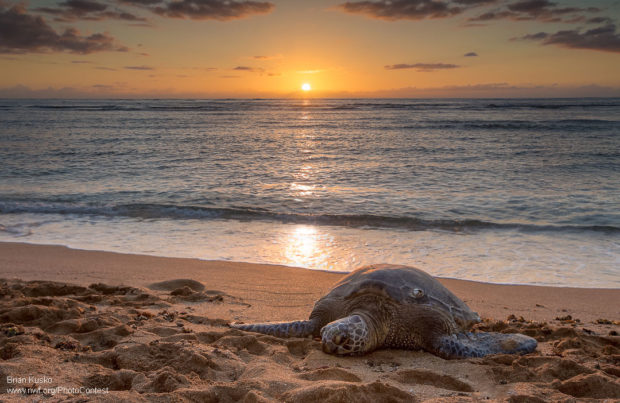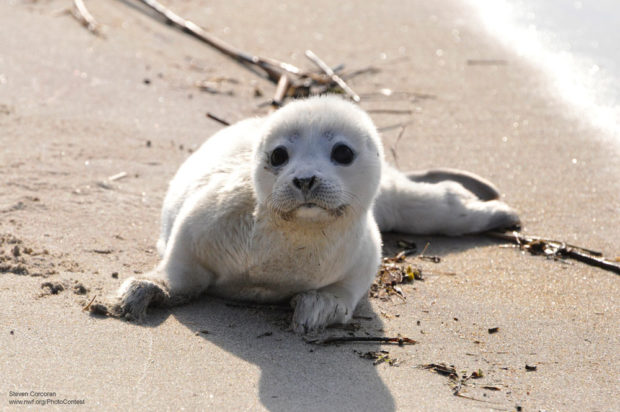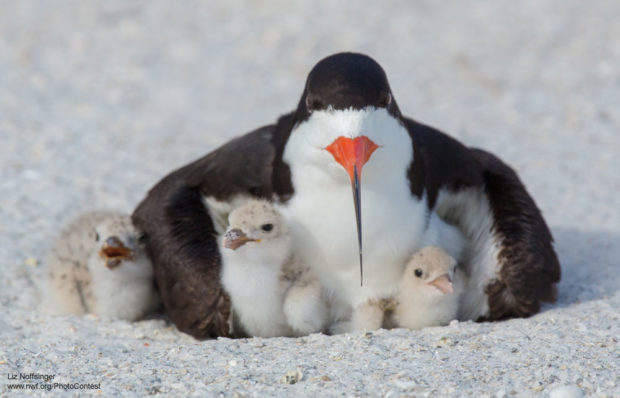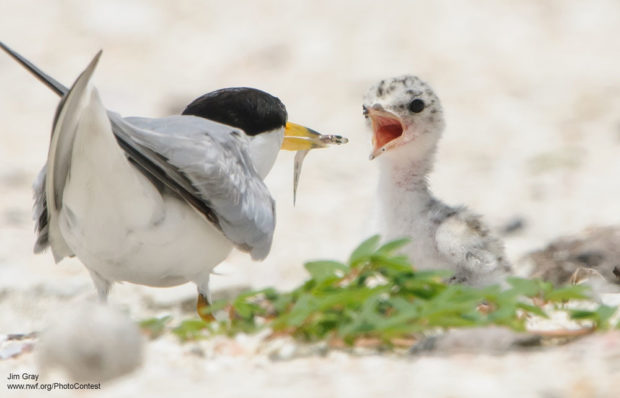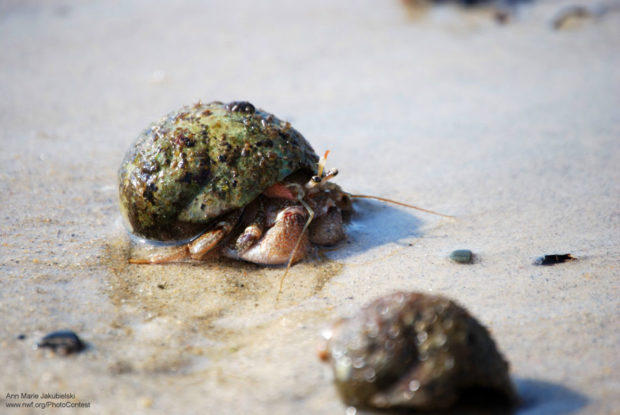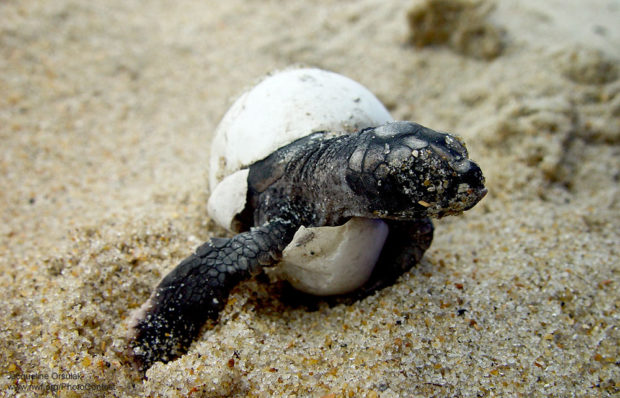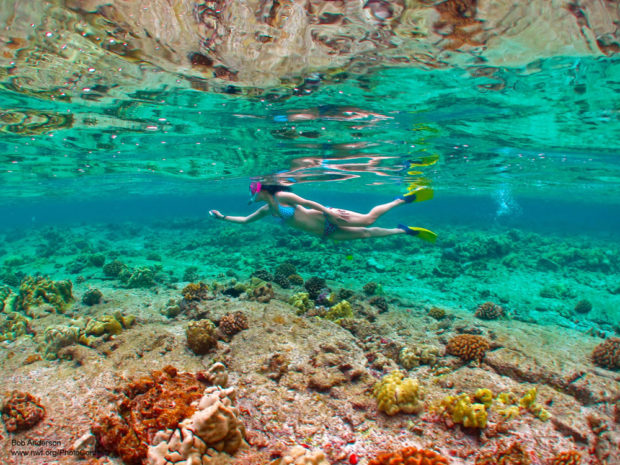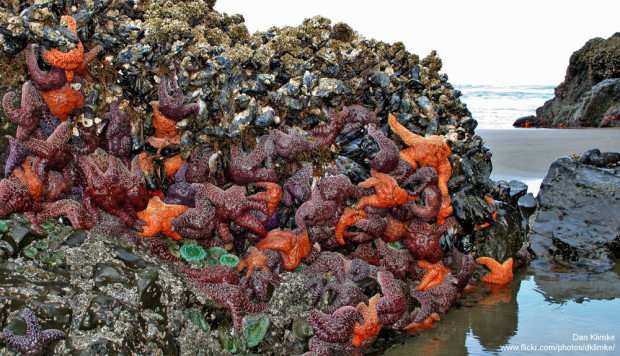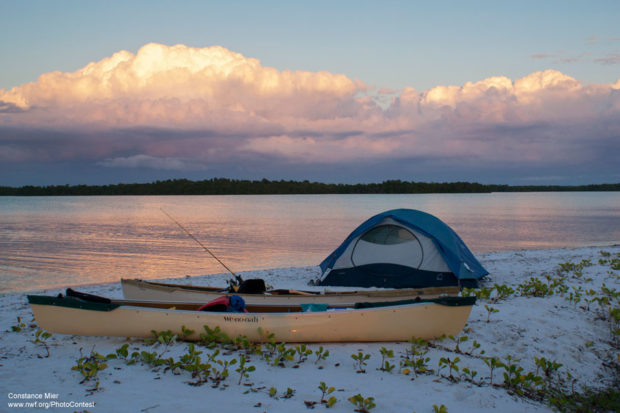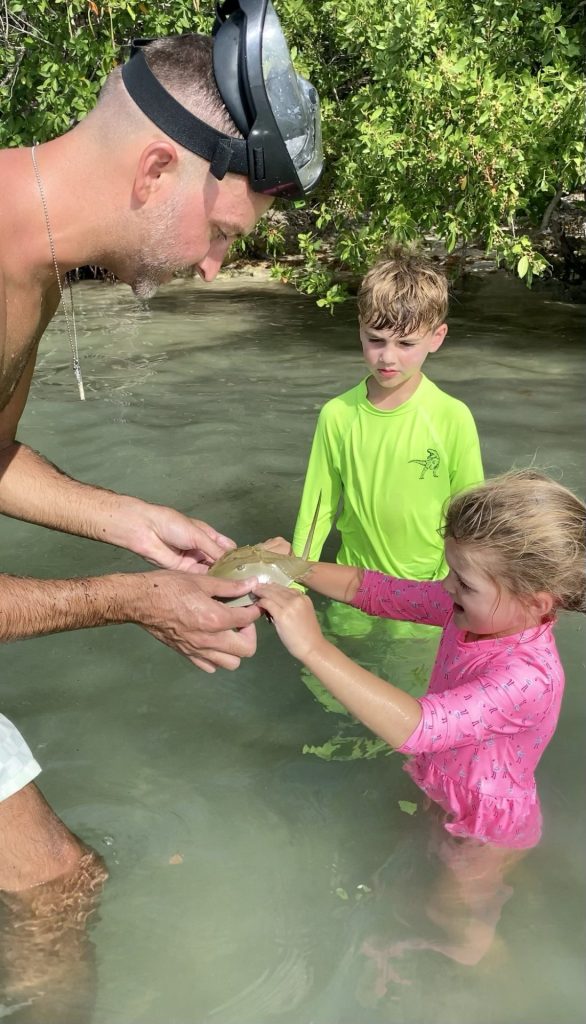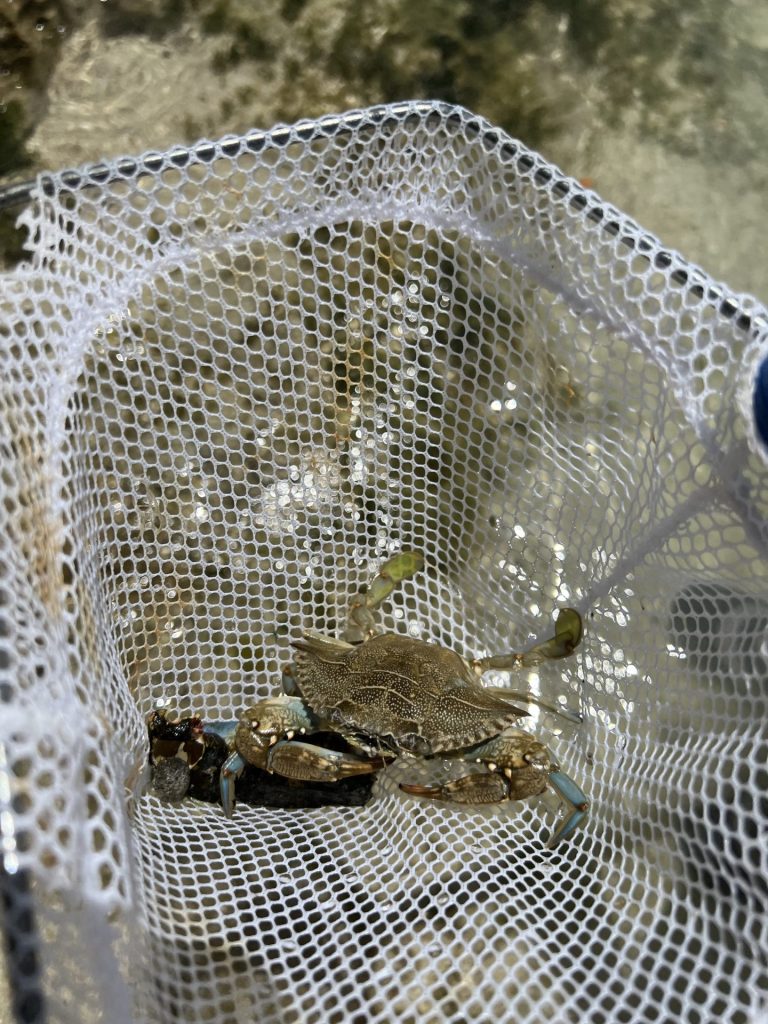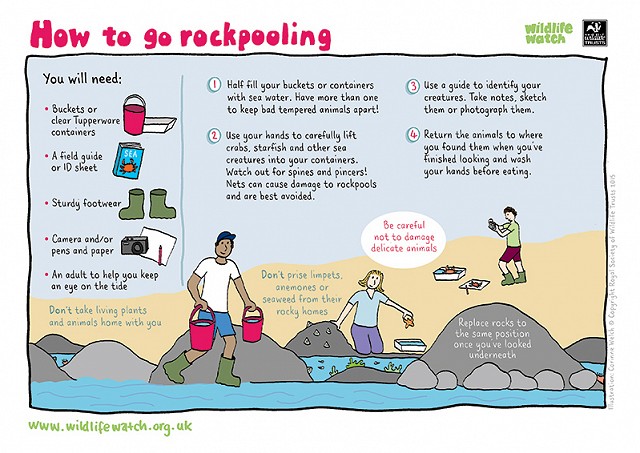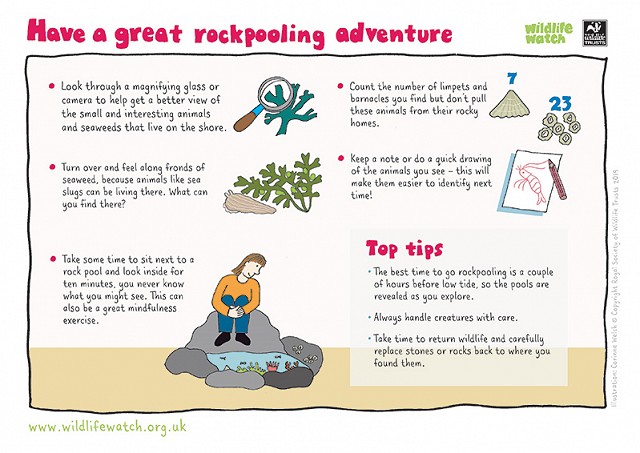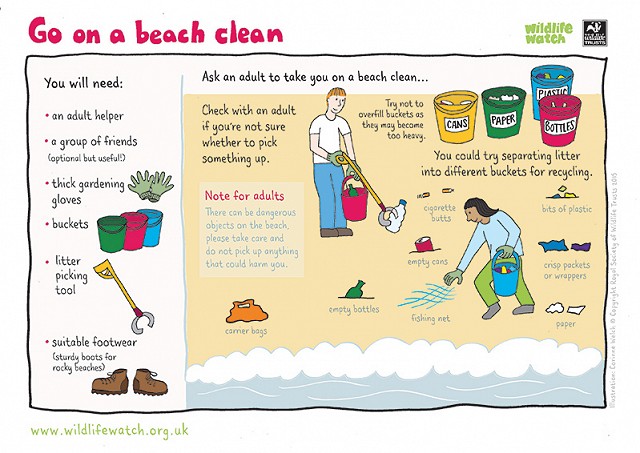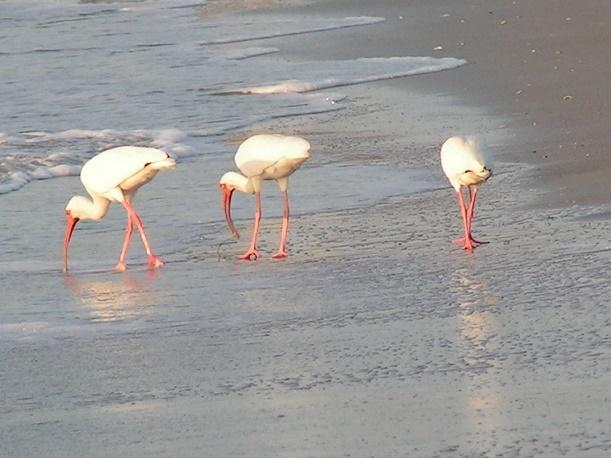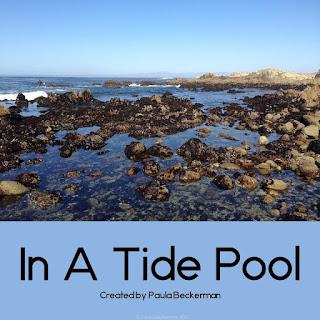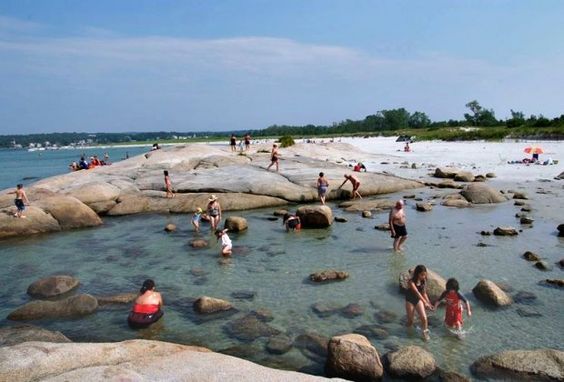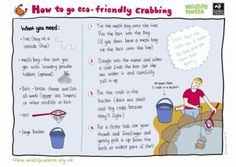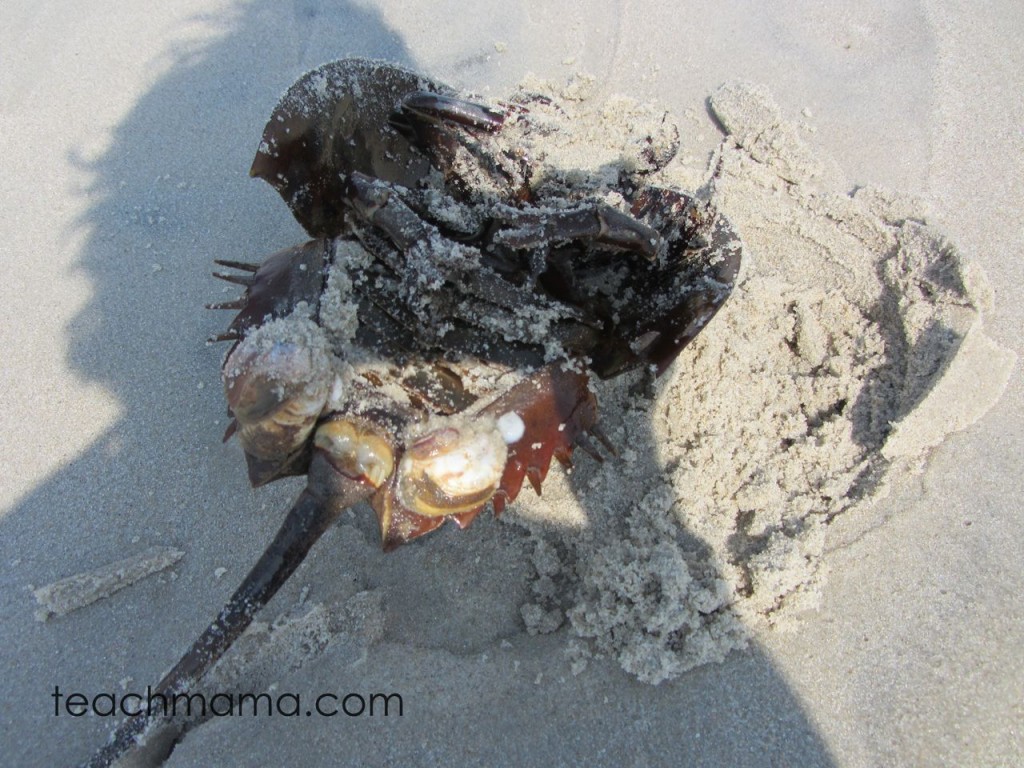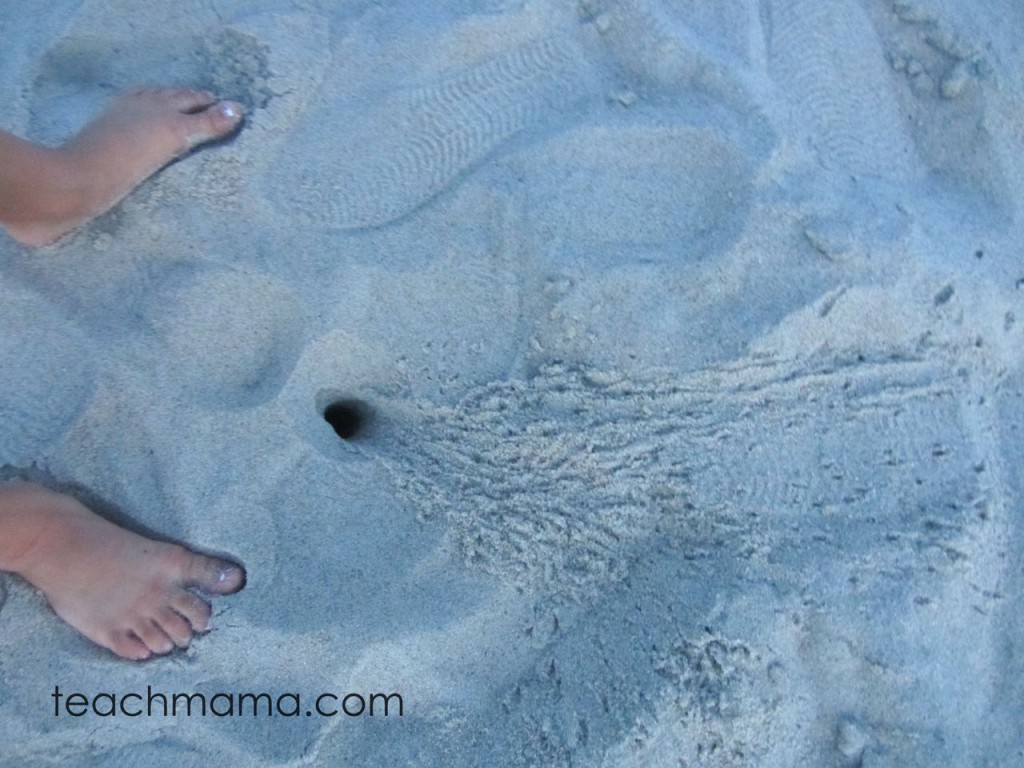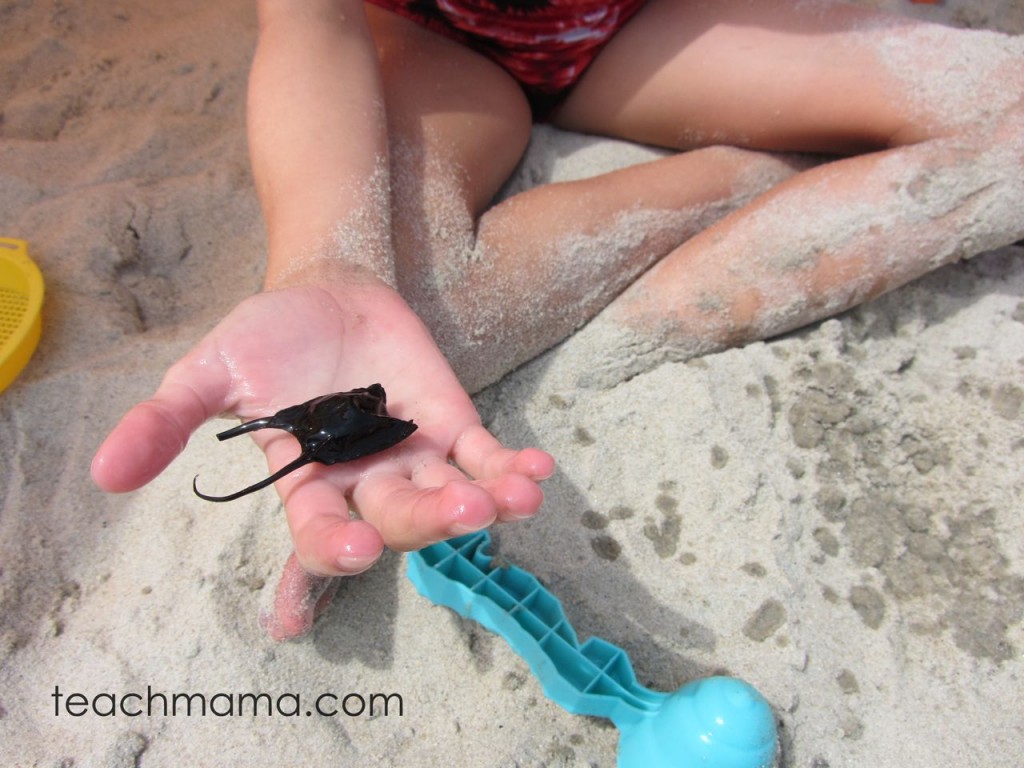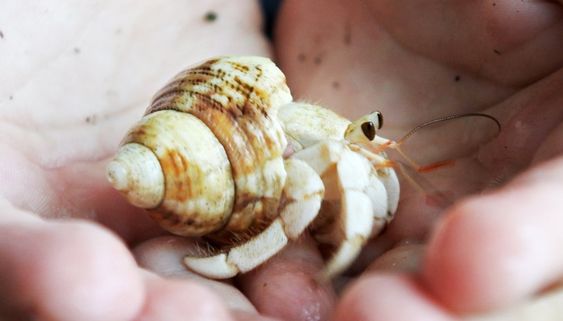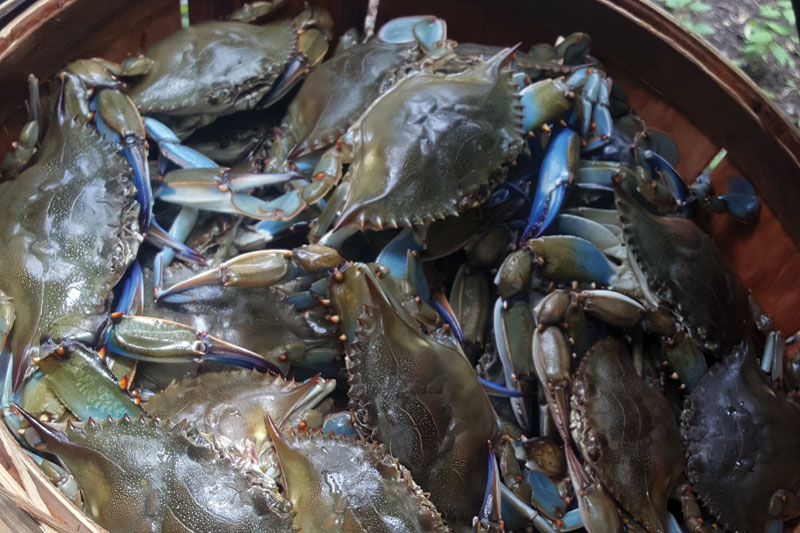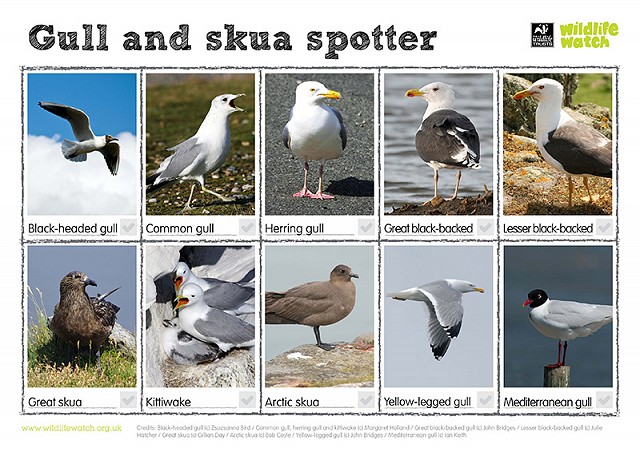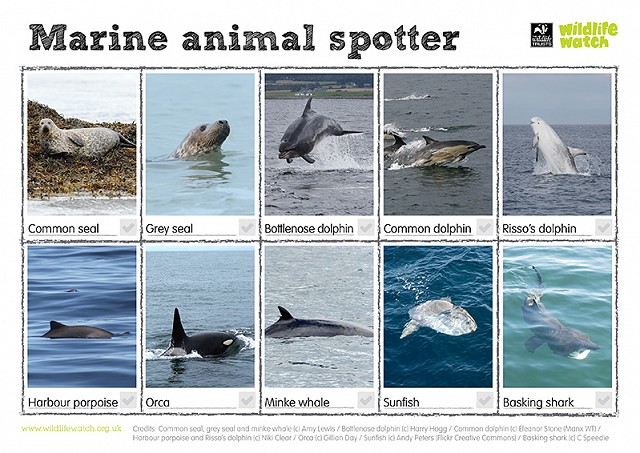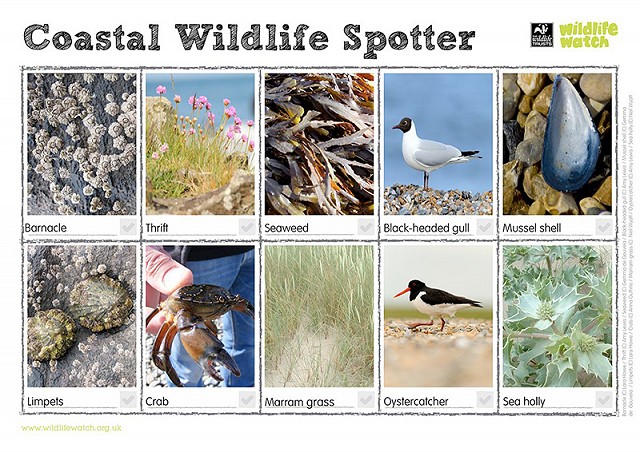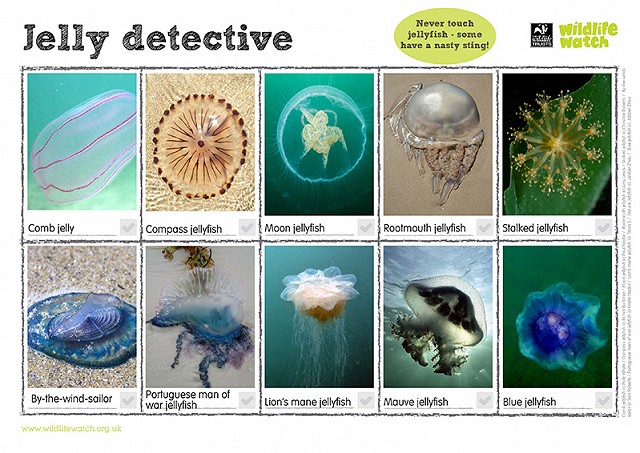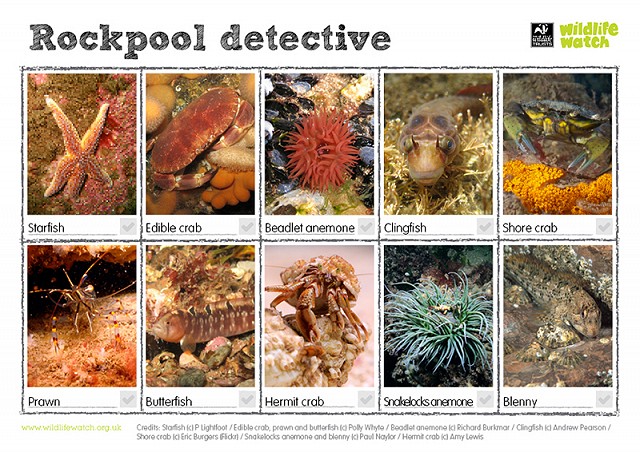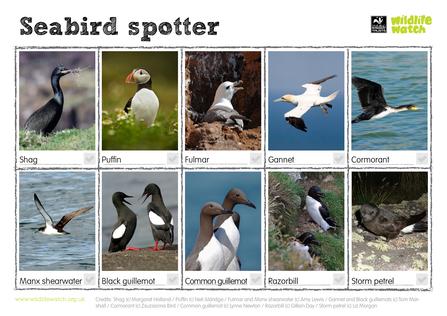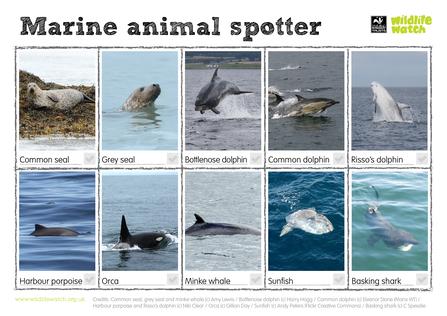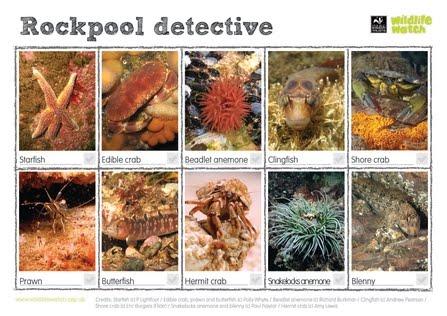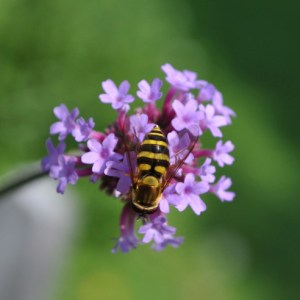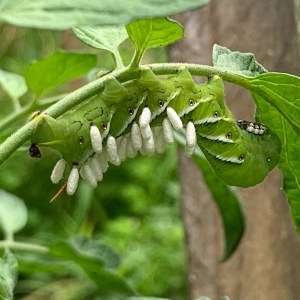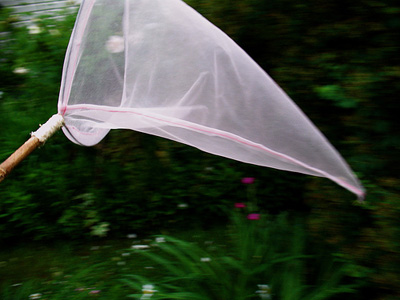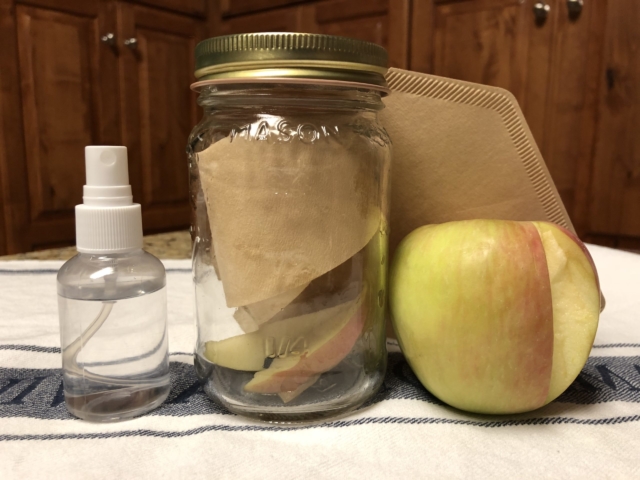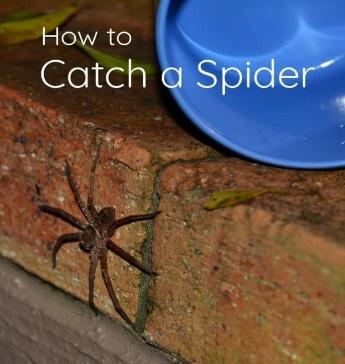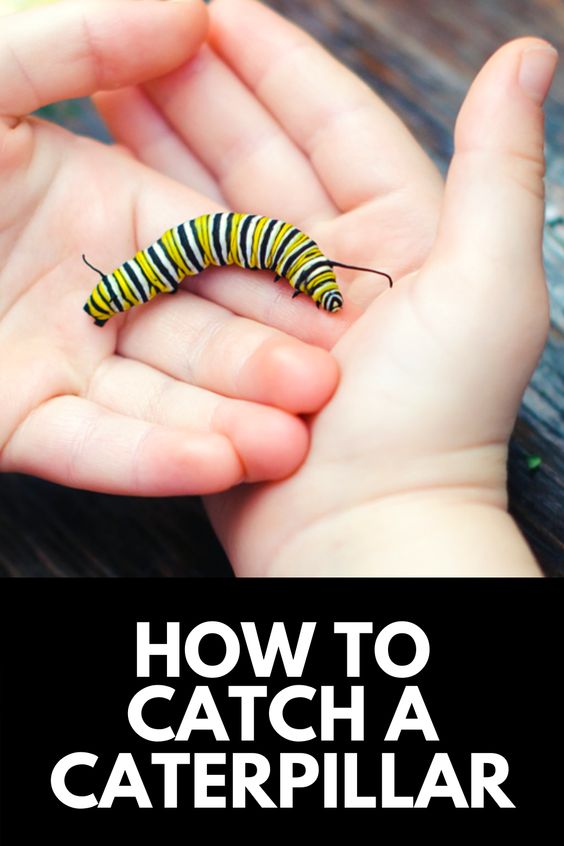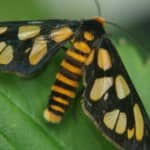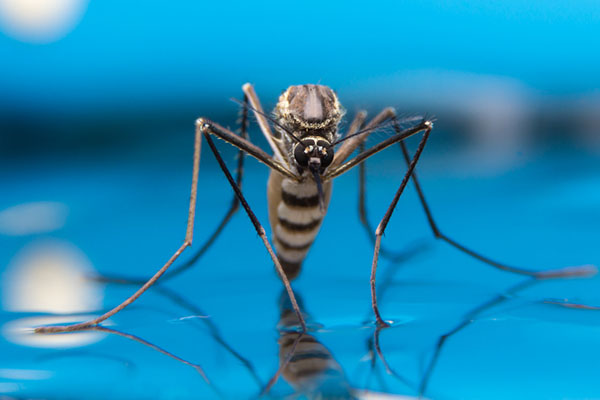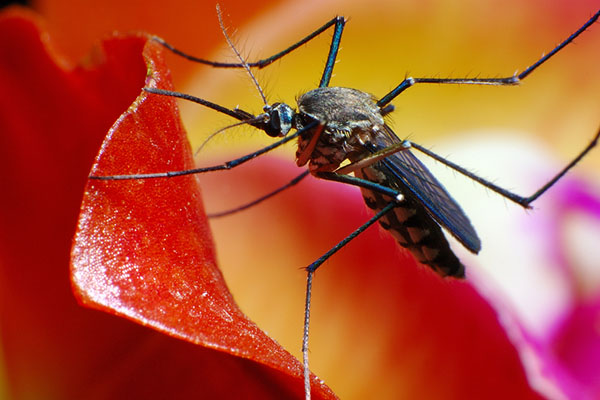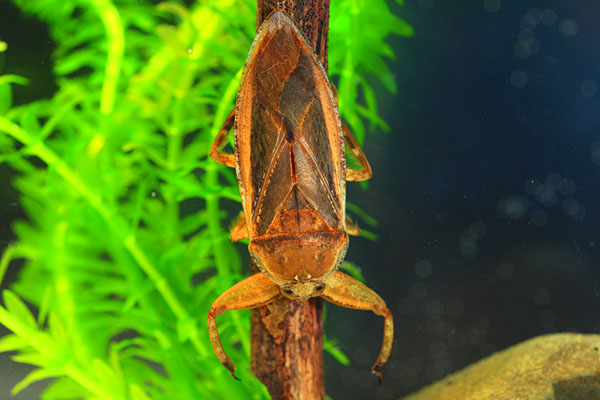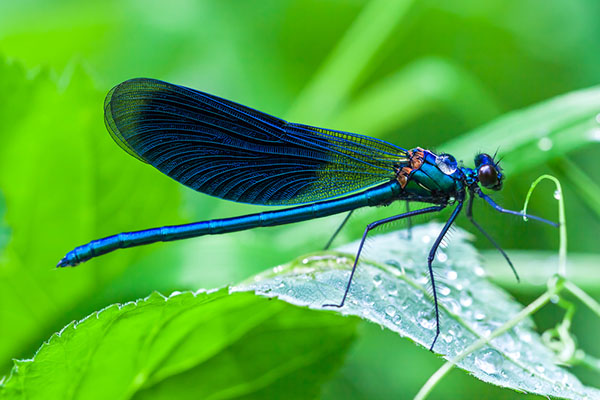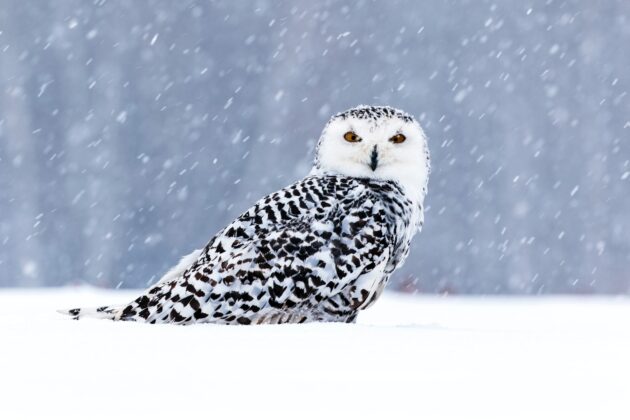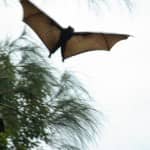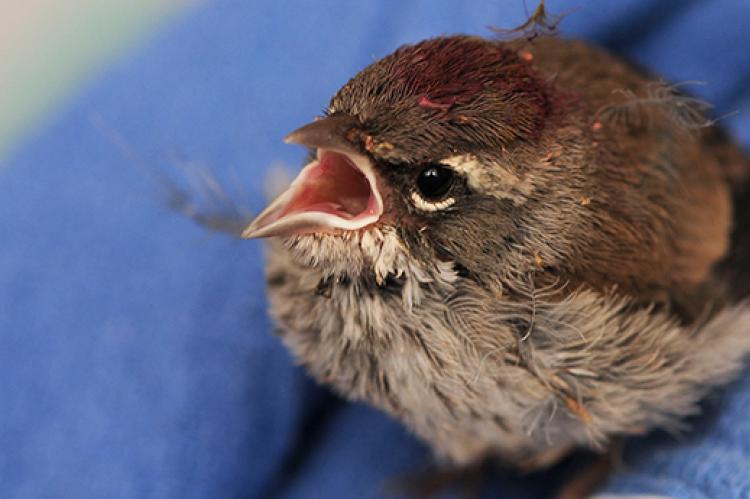Critter's From Wetlands
& the banks of Inland Water Sources
Visit a local pond, lake or river shore!
Use this free Day at the Pond printable for a list of fun things to do on your visit to a pond or lake. If there's not one close to your home, try calling a local nature center or animal preserve to see if they have a pond habitat.
I love this DIY Underwater Magnifyer from One Time Through! The perfect thing to take on a pond visit.
If you find tadpoles, Lovable Learning has details on how to raise tadpoles along with some great printables about a frog's lifecycle.
If your goal is to get a close-up look at what's in the pond, try this Geosafari Plankton Net.

WATER WALK: OBSERVING WATER HABITATS
What you Need
Paper (a few sheets) and Pencil Clipboard or something to write on Wetland Scavenger Hunt (page 4 and 5) Timer Optional: • Binoculars • Smartphone or camera • Field guides or other identification materials • Trash bag (for neighborhood cleanup purposes)
Jump Start the Exploration
All living creatures need water to survive, which makes aquatic habitats like rivers, lakes, ponds, and vernal pools an excellent place to see a wide range of wildlife. There will be permanent residents, like turtles, fish, frogs, and underwater bugs, as well as visitors from other habitats looking for both food and water.
Deer, foxes, birds, and other mammals search these habitats to find food or take a drink. Don’t forget every habitat is made up of non-living things as well. The type of soil, the shape of the land, and the amount of light and wind all impact the things that live on the edge of a pond, river, or vernal pool.
What are some things that might live in water habitat?
Where do you think the water comes from, and how does it stay here?
What is the human impact on this space?
How wild is it?
Staying Safe
Always explore with an adult and stay away from the edge of the water! The ground on the shoreline has a tendency to be very slick at near to the waters level.
Make sure you’re exploring in a place you’re allowed to be.
Don’t touch wildlife with your hands – it can be dangerous to you or them. massaudubon.org
Observation: Activities for A Waterbank Walk
Scientists use their power of observation to help them learn about the world. Observing natures takes practice and repetition as you train yourself to look for small details, to notice patterns and to recognize living and non-living things.
Below are four activities that will help you be a better observer. You can do each activity in different spots along your walk or one activity for the entire walk.
Activity 1: Big Picture
1. Talk a walk along a pond, stream, or wetland that is near your home. You will be observing the habitat along the walk. You will not be going into the water at all.
2. Along your water walk make some observations of what you see on a piece of paper. Record the date, time, location, and weather.
3. Look around at the plants and animals along the water. What do you see immediately? Is there anything surprising you did not expect? Do the plants and animals change along the walk?
4. Observe the non-living parts of your walk. Is the ground under your feet rocks, dirt, or sand? What does the dirt feel like in your hands? Is the ground you are along the walk flat or is it hilly? What does the wind feel like on your face? Can you pick up any smells? How do the non-living and living things change along the walk?
5. Use the Wetland Scavenger Hunt to help you find more living things along your walk.
6. At the end of the walk, try to describe the habitat to a friend or on paper. Use the evidence and observations you made for your description.
Activity 2: Look Down/Out/Up
1. This activity is designed to help us get focused on different parts of the ecosystem around us.
2. Divide the paper you are using into three sections. Label each section: Down, Out, and Up. massaudubon.org
For 60 seconds: LOOK DOWN: What do you notice on the ground? Write down what you see. Pick one thing and draw it. As you’re doing so, write down observations. What caught your eye about the item? Why did you pick it? Continue observing until the minute is up.
LOOK OUT: What do you notice about what’s right in front of you? Write down what you see. Then, pick one specific thing – either a plant, bug, or animal – and observe it. What is it doing? Can you guess why it’s there? If it’s a plant, what traits (adaptations) does it have to survive there? Continue observing until the minute is up.
LOOK UP: What do you notice about what is right above you? Is it treetops or sky? Are there any birds flying by? Think about the weather and clouds. How might the weather affect what’s happening on the ground? 3. What was the thing that interested you the most and why? Which area (Down, Out, UP) had the most to look at and why? Why did we divide up our observation like this?
From slimy slugs or worms in the ground to bird nests in the trees, the possibilities for exploration are endless — click those links for more fun nature guides for you and the kids!
How to find worms in your yard with the kids
River Otters Inhabit Local Waters2019threatened species, weasel family, semi-aquatic, habitat, wetlands, dens, senses, whiskers, eye lids, adaptations, diet, food, prey, predators, tracks, slides, activity, pups, babies, play, fur, life cycle, communication, scent-marking, habitat loss
Water Striders On Patrol2018habitats, predators, prey, vibrations, communication, adaptations, camouflage, food, winter survival, life cycle, eggs, nymphs, exoskeleton, molt, senses, fossils, pond skaters, water boatmen, water oarsmen, water skippers, water skimmers, pond skippers, surface tension, marsh, stream, activities
Wasps With Paper Houses and Bad Reputations2017hornets, yellow jackets, paper wasps, stinger, nest, colony, workers, queens, drones, metamorphosis, egg, larva, pupa, predator, prey, venom, scavengers, life cycle, defenses, solitary, balanced ecosystem, pollinators, activity
Muskrat Swims Home2017rodents, tails, beavers, rats, voles, Algonquian, runways, tracks, adaptations, webbed, feet, lodges, tunnels, dens, feeding, platforms, habitat, beneficial, teeth, predators, prey, wetlands, underwater, cattails, babies, kits, territory, scent glands, dr
Wake Up Turtle, It’s Spring2016snapping, painted, hibernation, basking, eggs, nests, predators, prey, life cycle, camouflage, defenses, foods, habitats, ectotherms, scutes, carapace, plastron, activity, observation

Fascinating Animals That Live In Mangrove Forests/ Swamp
Mangroves provide habitat for thousands of species—from fish and mollusks to various types of reptiles and birds. Here are some of the most fascinating ones.

Observe Frogs
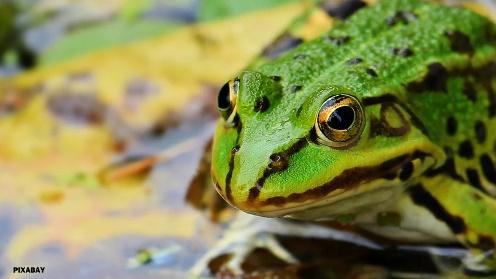
Springtime is frog time! Ready for some froggy adventures? Hop to it and be a frog scout!
What frogs live near you? Now’s the time to get out with an adult and find out. Frogs are on the lookout for wet places to find mates and lay eggs, so you should be on the lookout, too. Be prepared to get wet—and maybe even a little muddy! Here are a few tips:
Listen for frogs calling for mates.
In spring, male frogs call for females to be their mates. If you’re anywhere near a pond, marsh, or other wet area, you can’t miss their loud chorus.
Look online or visit a local nature center to find out which frogs live near you and what their calls sound like. You can find out which frogs and toads live near you with the Association of Zoos and Aquariums website.

See if you can sneak up on a frog before it plops into the water.
Hearing frogs is easy, but, if you want to see frogs, you have to be sly.
Quietly approach a place where you’ve heard frogs calling. If the frogs sense you coming, they’ll each jump into the water with a splash. But if you stay still, they’ll probably pop back up in a few minutes. Then you can get a good look.
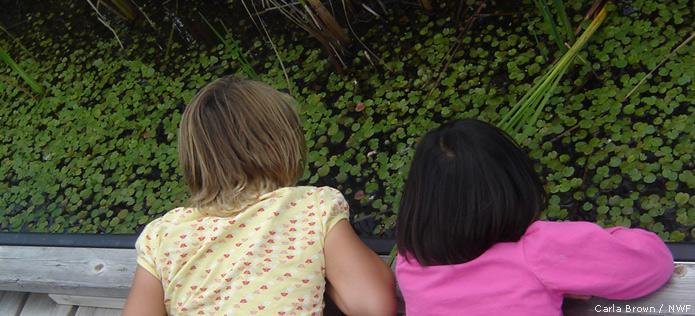
If you try to catch a frog, first make sure your hands are wet and free of any chemicals. That will help protect the frog’s fragile skin. Keep the frog close to the ground, in case it gets away. After checking it out, let it go where you found it.
Check Back.
All that calling is about one thing: making more frogs. So be sure to look for eggs and tadpoles, too. First you’ll see jelly-like clumps of eggs in the water.
Later, look for little tadpoles swimming around. Come back every few days and you can watch as the tadpoles lose their tails, grow legs, and leap away as adult frogs!
FROGGY TIP: A headlamp or flashlight will help you find frogs at night, when many are most active.
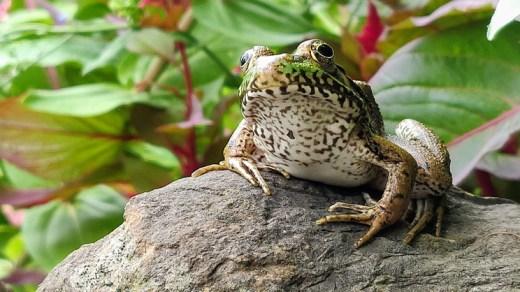
Become a citizen scientist by joining FrogWatch USA! By keeping track of the frogs in your area and sharing your information, you can help frog scientists figure out how different species are doing across the country. Have an adult visit aza.org/frogwatch for more information.
Catch a Frog
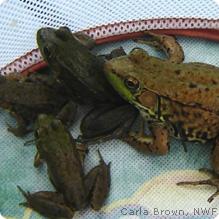
Watching a frog next to a pond is fun. But it’s even more fun to hold that slippery frog in your hands!
What You Do
Get Your Hands Ready
Make sure your hands are clean and wet. Oils and lotions on your hands can hurt a frog, while wet hands help its skin stay moist.Sneak Up On the Frog
As long as the pond is shallow enough, it’s best to sneak up on the frog from the water. If you approach from the bank, the frog can simply jump into the pond and swim away.Catch the Frog
Cup your hands together and quickly pop them over the frog. Keep your hands cupped around the frog so it can’t jump away. But don’t squeeze it!Keep the Frog Wet
Dip your hands into the water now and then to keep the frog wet. And, of course, let it go after a short time.
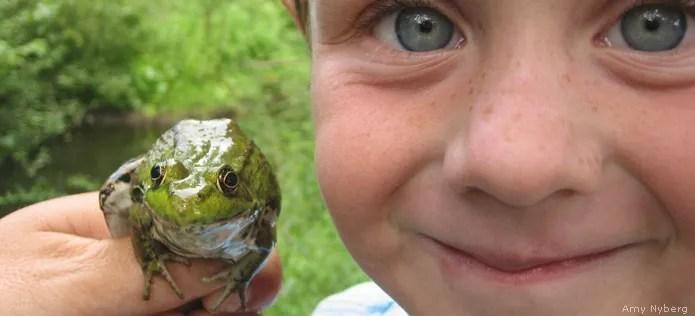
Catch A Lizard
Do you remember catching lizards when you were a kid? Remember? This was not something that parents taught us how to do, instead kids back then were more likely to teach their parents this skill. Lizards are FAST and they hide really well. I was the oldest kid in my family. My little sister, named Scarlet, was a real go getter when it came to catching lizards, she was 7 years younger than me, and I had “grown up” into a very “mature” 12 year old, so I was not perhaps amused with running after lizards. Scarlet, on the other hand, she was a diligent and faithful hunter of the lizard, on a daily basis it seemed, after school.
I can still see those little legs white with baggy stockings loosely gathering around her ankles as she darted here and there. And I can still hear the gasping for air, as she giggled with anxious excitement. I had to restrain myself from bursting into laughter as I watched her spring impulsively into a lunge upon the poor little reptiles, with no care as to whether this meant scraped knees or palms or elbows. Who could feel pain, when the intense joy of catching a lizard would far outweigh the potential for a having a collision with a neighborly tree branch?
So, YES! Why not? Parents, though you may not find your child taking to this predatory sport on his or her own, what is to stop you from doing this wildly playful oldie but goodie!? If you let the kid in you come to the surface once in a while, an activity like this will likely raise up the dormant joy in nature that is inside us all. Before you realize it, you may find yourself chasing the lizard with no remembrance to your adult mannerisms, as they will quickly be abandoned for the adrenaline rush you experience when you catch a lizard.
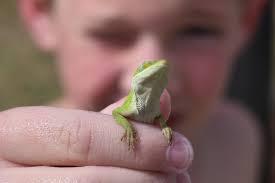
More on the Lizards Superpowers
How To Catch A Lizard In Your Backyard
If you want to get your kids outside to PLAY, but they don’t seem to take much interest in the outdoors, see how they react when they see YOU trying to catch a lizard and lunging about like a tiger after its mid-morning snack! If that doesn’t get them rolling in laughter, your kids are just sticks in the mud! For which the only cure will be MORE time outside!
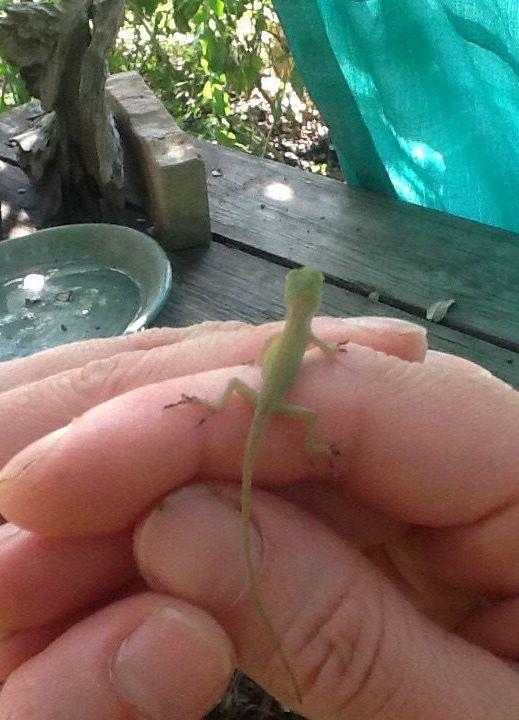
Keep these lizard catching tips in mind. You may want to do a little research on lizards common to your area before you begin. Make sure your child releases the lizard after they catch it and observe it for a short time. Also, be sure your child is gentle so that they do not hurt the lizard, after all, lizards are small and a bit fragile. Try not to grab the lizard by the tail so that they don’t loose their tail as it is an important part of their self defense. I just use the lay in wait and sneak up and grab the lizard method but there is also a grass lasso technique!
If you don’t successfully catch a lizard, don’t worry, you can always try again! In the meantime you could try some making some lizard crafts or lizard treats together!

Safely Catch, Relocate and Release Butteflies and Moths.;
Safely Catch, Move and Release Butteflies and Moths.: We recently had a conservatory built. It's great, but it seems to attract extra occupants. We've had flies, wasps, bees, crane flies, damsel flies, frogs and, obviously, butterflies and moths. Most of these can be easily sorted - flies get swatted…
How to Help the Kids Catch More Crayfish
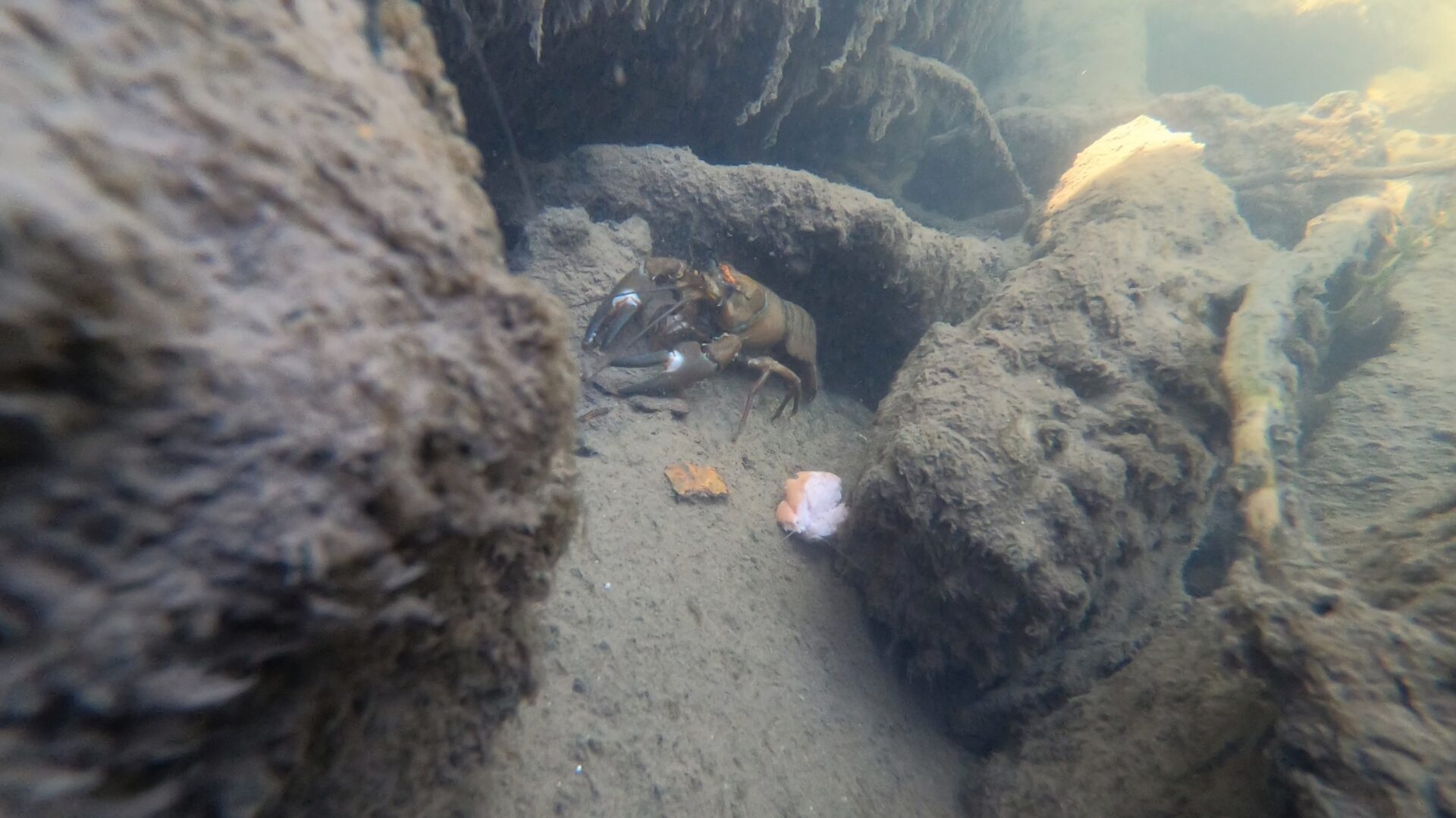
Fishing for crayfish. Photo courtesy of Kevin Sikora.
Fishing by Hand
The kids will have the most fun trying to catch crayfish by hand. And if they manage to land 5 or 10, they’ll be thrilled. Here’s what you’ll need in terms of gear:
3 – 4 feet of fishing line
2-gallon bucket or some other container to store the catch
Small hook (optional)
Kids minnow net (optional)
Bait
To “rig” up a line, you can either make a noose knot on the end of your fishing line or attach a small fishing hook to it using a clinch knot. A hook will make it easier to add new bait to the line if the crayfish rips it off. With a noose knot, you just tighten the knot over the bait. This approach of course doesn’t have the sharp ends of a hook, but you might have to keep tying these knots. The knot will most likely close on itself if the crayfish wins the “fight” and leaves with the bait.
Once the kids get a crayfish on the line, with (both claws) over the bait, they should (very gently) pull the crayfish in. If they yank on it, they’ll yank it away from the crayfish.
In order to land more crayfish, give the kids a small minnow net. As they pull the crayfish closer to them, they can use the net to come up from behind and land their catch.
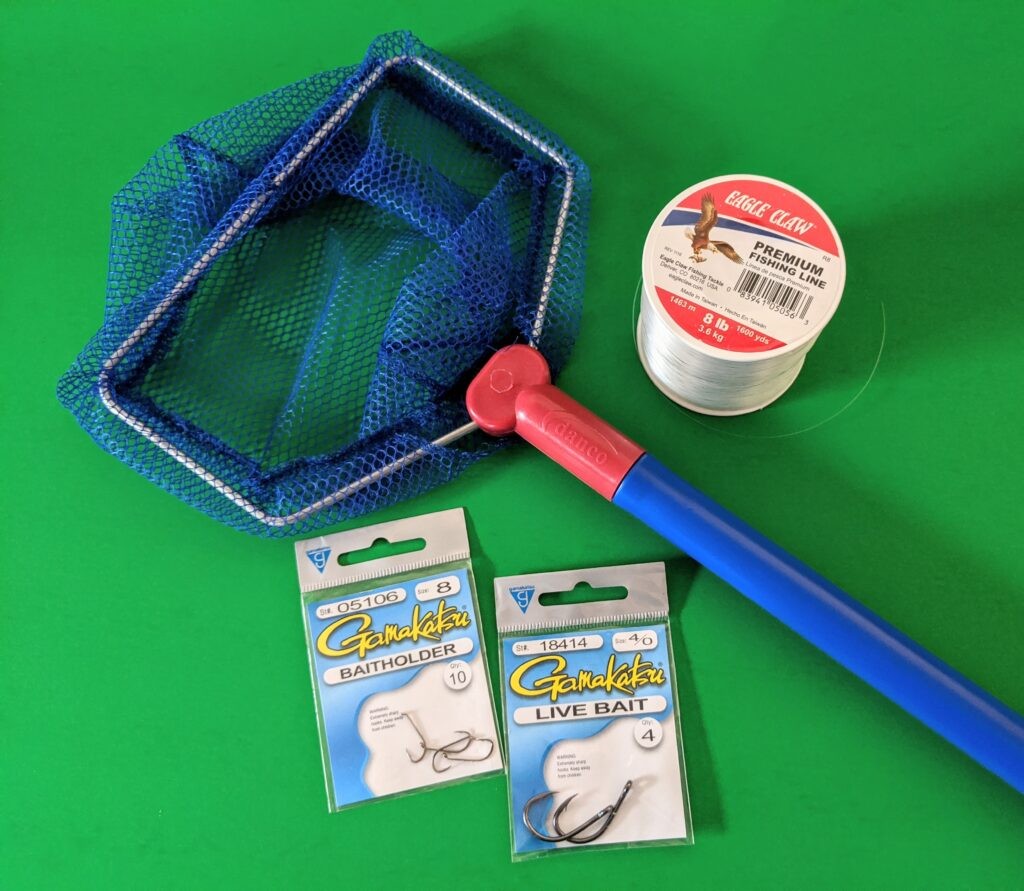
Fishing for crayfish. Image courtesy of Kevin Sikora.
Traps
Before you buy any traps, read the fishing regulations for your area. Once you understand those, then look into buying or making your own.
No matter what you do for traps, make sure the entrance holes are about an inch and a half wide. Otherwise, you might have a harder time catching the big ones.
Ideally, you want to have the bait hanging right in the middle of the trap, regardless of the trap’s position on the ground. That way crayfish won’t be able to eat your bait from outside of the trap.
Bait
There are a lot of opinions about what to use for bait. Some people use hotdogs or punctured cans of dog food. Others recommend fresh, oily fish. Chances are good that you can’t go wrong with any oily fish as long as it’s not a fish that preys on crayfish in the area.
Finding the right bait will probably involve some trial and error. It could be that there are so many crayfish in your area that it doesn’t matter what type of bait you throw out. Or, you might find that they’re kind of picky about what they munch on.
Where to Fish
You’ll want to fish in rocky areas. The rocks will give them someplace to hide.
If the water is clear and you want to know if there are any around, drop a line down with some bait and watch the area. After about 5 to 10 minutes of the bait being in the water, you should be able to see some movement. If not, try a different spot.
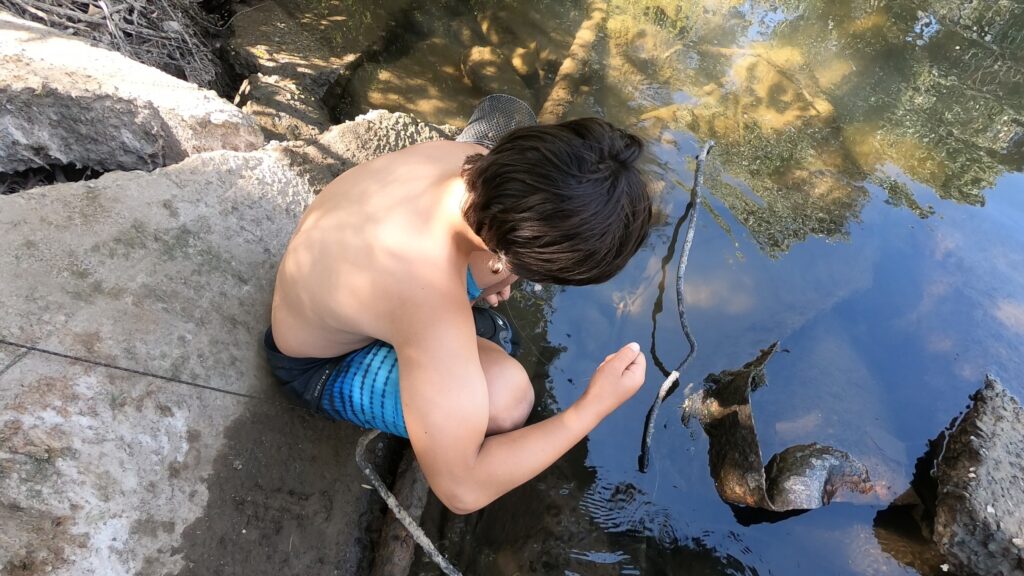
Camping at Caswell Memorial State Park. Image courtesy of Kevin Sikora.
Hiding Traps
Usually, you’ll leave your traps unattended. If people see you throwing them out or if they find them, they might get curious and pull them up. There are ways to avoid this. For example, choose your line color carefully. White or orange will stand out. Choose a brown color or some other color that will blend in with the environment.
Try not to tie your line to a branch on a tree. Instead, tie it to a rock or a piece of driftwood on the shore. You could also tie it to a stake that is sunk in the ground underwater. You want to make the line attached to your trap as “invisible” as possible.
Fishing Regulations
Be sure to read up on the fishing regulations in your area. Some regions might restrict the take of certain native crayfish and allow you to take as many as you want of another species.
Also, look up if you and the kids need a fishing license.
Transporting Your Catch
Crayfish can survive out of water for at least a day. All you need to do is to keep them moist. If you decide to keep them in water for the ride home, you’ll need to use an aerator. If you don’t, the crayfish will use up all the oxygen in the water and suffocate. You don’t want to cook dead crayfish.
Cleaning Your Catch
Ideally, you’ll let the crayfish soak in water for at least 24 hours before you cook them. This will let them clean themselves out a bit. Once again, if they’re in water, you’ll need an aerator. Refer to the (Live Free Fish More) video below.
If you don’t have a lot of time, you can clean them in a cooler. Just cover the crayfish with a layer of water. Then dump the water out. Repeat this process until the water you’re dumping out is fairly clean looking.
Last Bit of Advice
Live Free Fish More and Crayster are good YouTube channels to check for more information about trapping crayfish.
Have fun with the kids!
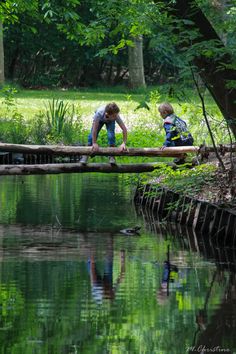
Bull Snakes Are Awe-sssss-some predators, prey, hibernation, senses, smell, constrictors, habitat, dens, ecosystem, ectotherms, body temperature, keratin, scales, diet, food, gopher, jaws, eggs, babies, hatchlings, life cycle, shedding, snakeskin, camouflage, defenses, chemosensation, taste, slither, activity
Muskrat Swims Home rodents, tails, beavers, rats, voles, Algonquian, runways, tracks, adaptations, webbed, feet, lodges, tunnels, dens, feeding, platforms, habitat, beneficial, teeth, predators, prey, wetlands, underwater, cattails, babies, kits, territory, scent glands, dr
List of Aquatic Pond Insects in Garden Ponds
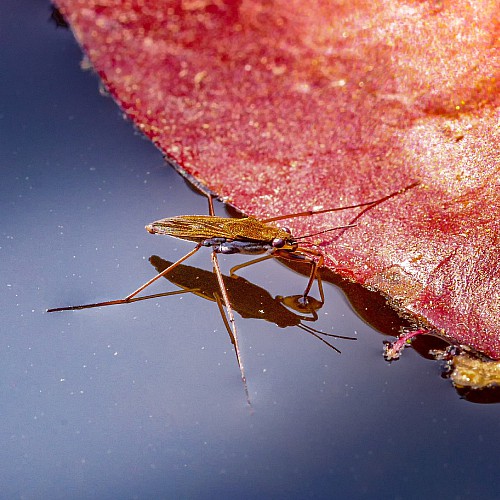
Aquatic insects are highly beneficial to ponds, with their presence within a pond being a good indicator of ecosystem health. Public domain.
Aquatic insects are an essential part of a balanced water ecosystem, and the ones that are present can tell you a great deal about your pond and how healthy or unhealthy it is. For example, dragonflies are sensitive to pollution and therefore tend to be found in areas with good water quality, while leeches and mosquitoes are pollution tolerant, meaning that if they’re around, there’s a chance that your water needs some TLC.
Biologists often catch aquatic insects in water to deduce how healthy that area is, while of course performing other tests such as measuring oxygen and nutrient levels. This makes them exceptionally useful bio-indicators in freshwater ecosystems.
In addition to indicating water quality, aquatic insects also perform a variety of functions for your pond. Some will feed on other insects (for example, dragonfly nymphs have been known to eat mosquito adults and larvae); others consume algae and parasites; most can provide food for your fish, turtles, frogs, and so on; and some, such as caddisflies, help break down dead and decaying matter that might otherwise build up.
While insects are often viewed as somehow undesirable, gross, or frightening, the reality is that there are millions of species of them, and their place toward the bottom of the food web means that they are relied on heavily by everything else – even us! Insects enable life as we know it, and are just as important in your pond as they are anywhere else. Here, we will cover insects that are found directly in freshwater ponds as well as those that live around ponds but are not necessarily in the water.
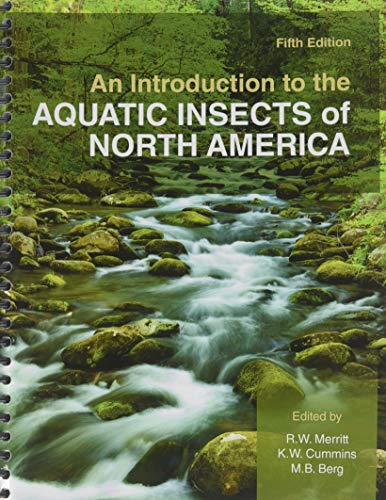
An Introduction to the Aquatic Insects of North
Five bugs that are a sign of clean water
These five macroinvertebrates can tell you a lot about the health of a waterway BY MARGOT CUMMING |

A stonefly larvae is found in Seneca Creek in Pendleton County, W.Va., on April 21, 2018. (Photo by Will Parson/Chesapeake Bay Program)Each spring, scientists, natural resource managers and volunteers head out into streams to check up on the health of the waterways. Armed with buckets and nets, they are searching not for water samples, but for bugs—insects that live the first part of their life underwater. These larval-staged bugs, called macroinvertebrates, live in the streams for a few months to a few years looking for food. Each different type needs a certain set of conditions to survive, so their presence or absence in waterways says a lot about quality and health of the water. The following are some of the most common macroinvertebrates measured by scientists in the Chesapeake Bay watershed.Mayflies (Ephemeroptera)

A mayfly larva is collected from Bennet Creek near the Monocacy River in Frederick County, Md., on May 4, 2017. Macroinvertebrates that live in healthy streams make up the food base for native fish. (Photo by Will Parson/Chesapeake Bay Program)Mayflies live in some of the best quality water, preferring clean, cold, fast-flowing streams. Larval mayflies will live in the stream for about one year, grazing on algae or bacteria. Though they live for only a single day, the mayfly adults – known as “spinners” to the fishing crowd – are a favorite food of another clean water-loving creature, the brook trout. Identifying characteristics of larval mayflies include three tails (sometimes two), and flattened gills that are attached to the outer edge of the body.Stoneflies (Plecoptera)

A stonefly larvae (probably Megarsis) is found in Seneca Creek in Pendleton County, W.Va., on April 21, 2018. (Photo by Will Parson/Chesapeake Bay Program)Stoneflies also require clean, fast-flowing water to survive. They have a varied diet, feeding on other aquatic insects and decaying plant materials. They live in the water for as long as three years as a juvenile, while adults reside there for several weeks. Stoneflies are very sensitive creatures that dislike when their habitat is disturbed, so they’re excellent to track over time. You can Identify them by their two tails and hair-like gills that are on their body or grouped around their legs.Caddisflies (Trichoptera)
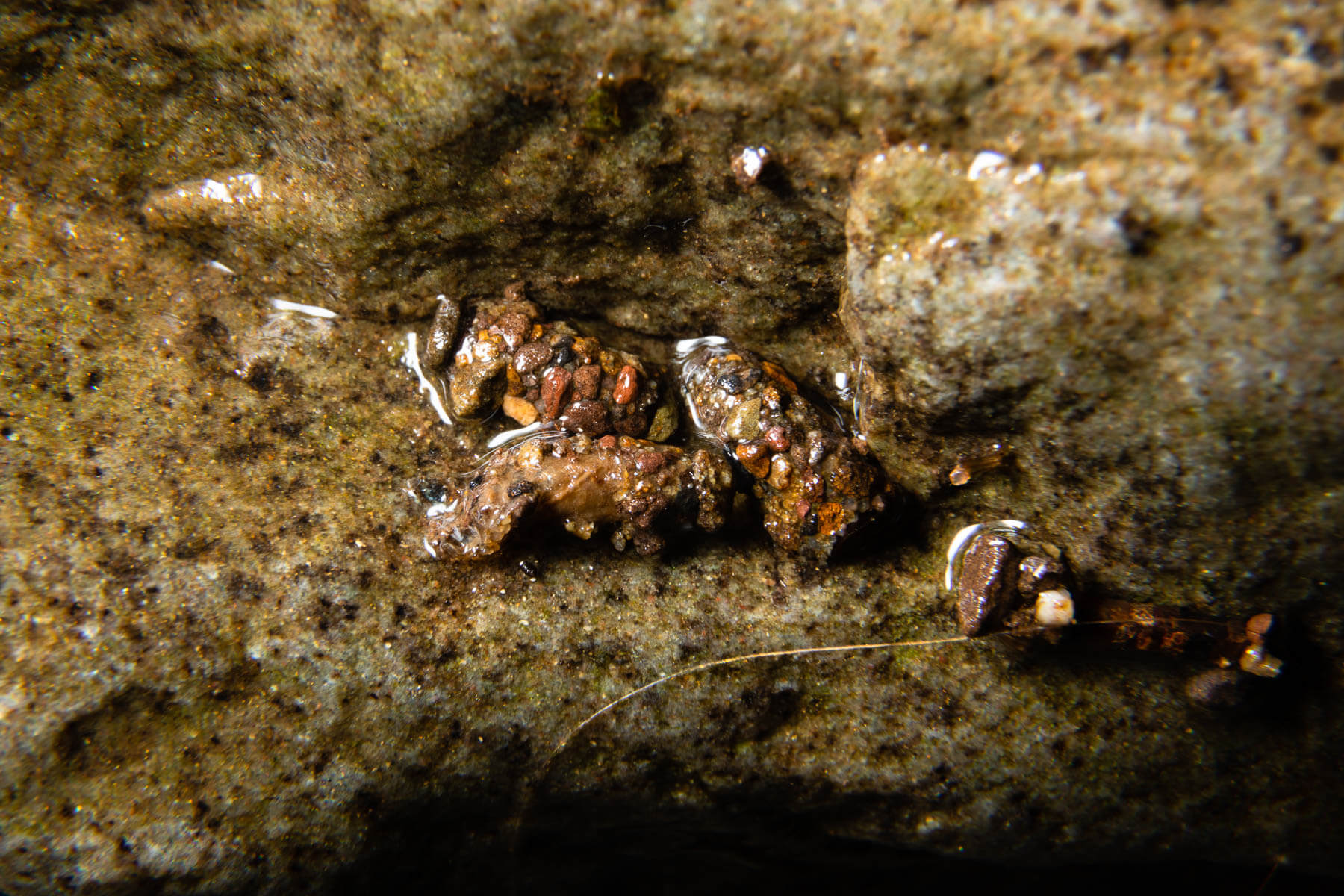
Caddis fly larvae are found in Seneca Creek in Pendleton County, W.Va., on April 21, 2018. (Photo by Will Parson/Chesapeake Bay Program)Caddisflies are heartier macros, living in a wider range of water quality conditions including slightly degraded or polluted streams. Depending on the species, caddisfly diets range from bacteria to plants to other insects. Larval caddisflies can spin silk from a gland in their mouth which they use to build a case around their body or a net to catch food. The cases can be elaborately made using sticks, leaves, rocks or sand grains. When caddisfly macros are ready to transform into adults, they use their silk to build a cocoon on rocks in the water. They emerge as adults after a few weeks and can live for several more.True Flies (Diptera)
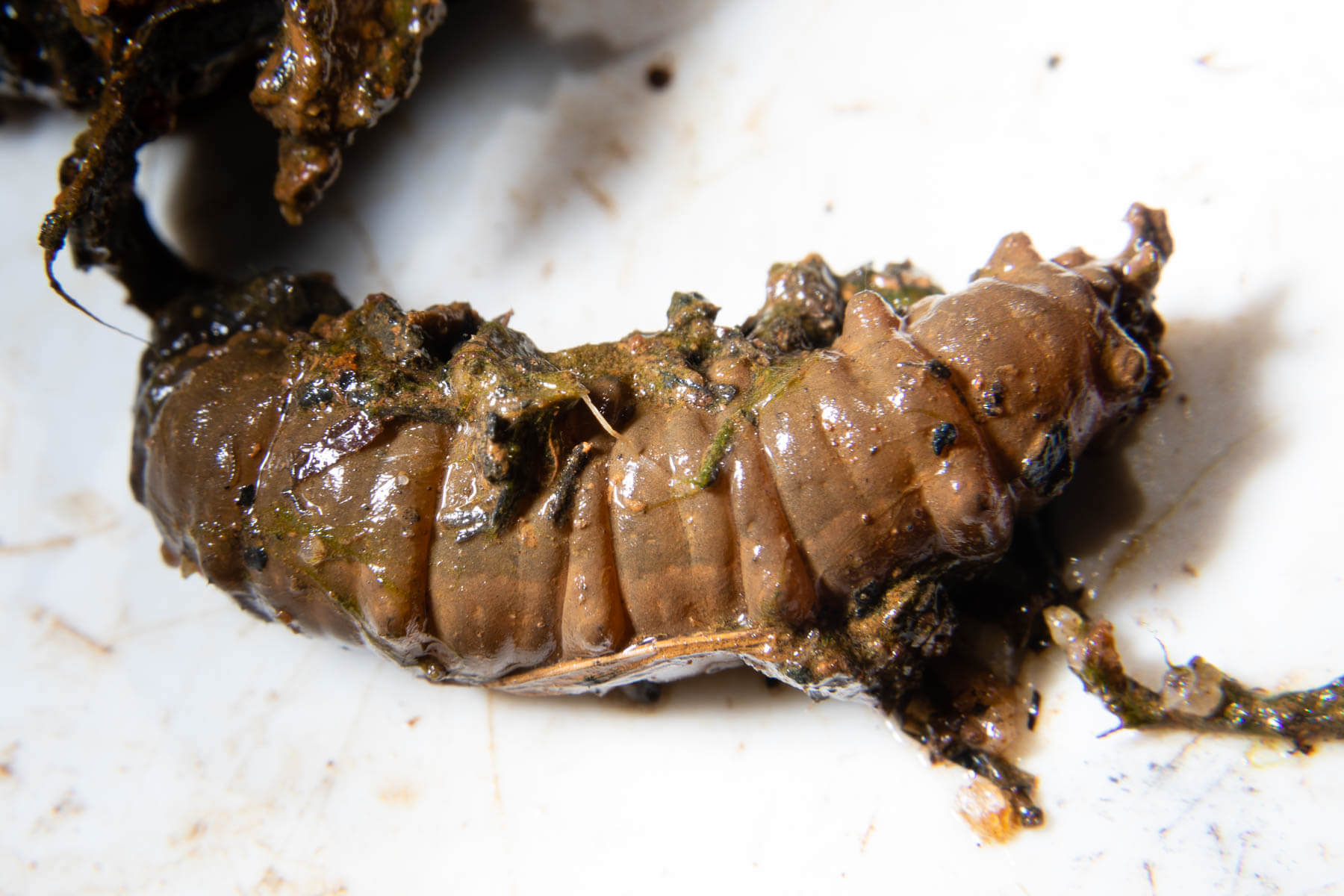
Cranefly larvae The site of a stream restoration along almost 5,000 feet of Pope Branch is home to a crane fly larvae in Southeast Washington, D.C., on March 28, 2019. The entire watershed of 1.6-mile Pope Branch falls inside the District of Columbia and feeds into the Anacostia River. The stream was restored in 2016. (Photo by Will Parson/Chesapeake Bay Program)Many of the insects people dislike, such as mosquitos, midges, blackflies and horseflies are true flies—though these are only a small percentage of a vast order. True flies include any insect with only one pair of flight wings and a pair of modified hind wings called halteres. The creatures serve as an abundant food source for many well-loved species and in many cases are even important pollinators. They are tolerant of poor water conditions, so they will be found in degraded and polluted streams.Dragonflies and Damselflies (Odonata)

(Photo courtesy of Jared Gorrell/iNaturalist CC BY-NC)
Dragonflies and damselflies are commonly found in shallow, non-flowing waterbodies like ponds and wetlands. Dragonflies have huge wraparound eyes and flat, wide airplane wings at rest, while damselflies are daintier, with space between their eyes and wings demurely folded on their slender bodies when at rest. Both are predatory and hunt a variety of prey including small fish, tadpoles and other aquatic insects. They have well-developed, movable lower jaws to snatch prey as it swims by, and they are the longest lived of our macroinvertebrate group.
The nymph stage (the stage before full maturity) for dragonflies and damselflies can last up to seven years, while the adults can also live for multiple years and may even migrate to avoid harsh winters.Just like forage species and plankton, macroinvertebrates play an important role in the food web, while also serving as an indicator of water quality health.
Next time you are near a stream in early spring, check to see if you can find these insects starting their life in what will likely be a health waterway.
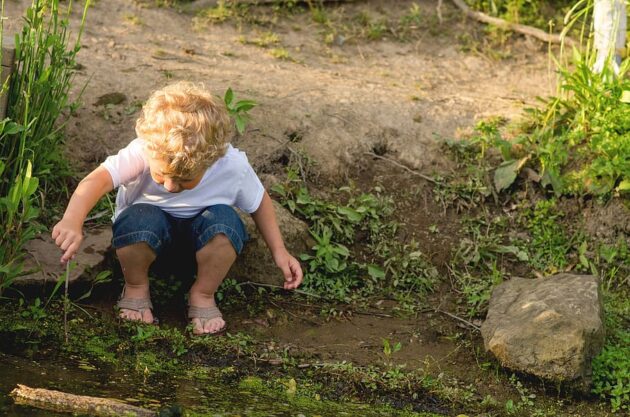
Ponds: Sensory Discovery Zones
Ah, pond life. The simple life. But what looks like a quiet, still— even stagnant—...
Seasons spotter sheets
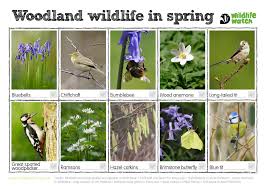
This series of spotter sheets are useful when identifying living things in their habitats at different times of the year. They contain sheets for each of the seasons include sheets which help to identify:
Autumn leaves
Autumn wildlife
Trees in spring
Spring wildflowers
Summer flowers
Summer waders
Woodland wildlife in summer
These resources have been provided by the Wildlife Trust
Downloads
Download all files as a .zip 5.62 MB
Information on the permitted use of this resource is covered by the Category Three Materials section in STEM Learning’s Terms and conditions.
River Otters Inhabit Local Waters threatened species, weasel family, semi-aquatic, habitat, wetlands, dens, senses, whiskers, eye lids, adaptations, diet, food, prey, predators, tracks, slides, activity, pups, babies, play, fur, life cycle, communication, scent-marking, habitat loss
Water Striders On Patrol habitats, predators, prey, vibrations, communication, adaptations, camouflage, food, winter survival, life cycle, eggs, nymphs, exoskeleton, molt, senses, fossils, pond skaters, water boatmen, water oarsmen, water skippers, water skimmers, pond skippers, surface tension, marsh, stream, activities
Lakes, Rivers, and Underground Water
Watch this program with your child, then find a local waterway in your area and explore where it starts and where it ends. [VIDEO]
Pond Life - Create Your Own Virtual Pond
Young children can drag and drop plants and animals to create a pond scene. Talk about the roles each one plays. Who might perch in that tree? Who makes a nest in the rushes? Who is found in the air, the water, on the shore, in the depths or on the surface of the pond? Why? Now get out there and visit a real pond and see who you can spot! Hint: don't forget to look for tracks, scats, and other signs of pond visitors.
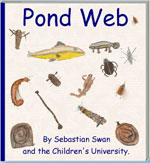
Who eats what at the pond? Preschoolers and kindergartners will enjoy browsing this free online "who dunnit" style book that illustrates a food chain. All pictures provided by kids!
How people use the land can help or harm living things in an ecosystem. In this game the citizens of a nearby town want to develop a park in the area that surrounds their local pond. But how will changes to the land affect the fish in the pond? Changing the land that surrounds a pond ecosystem can either help or harm the fish living in the pond.
In this virtual lab game provided by Discovery Education. you will be an environmental scientist who experiments to find the most eco-friendly way for the citizens to build their park.
Ponds and Puddles habitats, ecosystems, wetlands, water, animals, Native Americans, cattails, observations, amphibians, frogs, reptiles, birds, dip net, life cycles, activities

Use this exploration to talk about where the water comes from that goes into your local waterway. Use the Student Sheet for record-keeping and answering questions about the water begins and ends.
Think all wetlands are the same? Get the quick low down definition on what makes a swamp, a bog, a fen, or a marsh. While you're visiting this Untamed Science Biomes page, check out their map showing the distribution of wetlands in North America and check out their ideas for helping wetlands.
Coastal wetlands, inland wetlands, saline marshes, wet prairies -- what do they have in common and what makes them each so special? Useful information for anyone doing a report on wetlands. From the Environmental Protection Agency.
See also: Wetlands and People Wetlands Education Cypress Swamps EstuariesSwamps
Even more wetland varieties, thoughts on how swamps form, plus some very famous examples. From Nature Works.
See also Bogs, Fens, and PocosinsPrairie potholes, Vernal Ponds, and PlayasFresh Water MarshesPonds
AMPHIBIANS & REPTILES
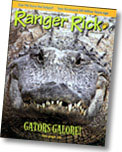
This kid friendly page from Ranger Rick is loaded with fun facts about the American alligator.
Part of the Bio Kids Critter Catalog, this page is chock full of fascinating facts about the American alligator. Be sure to surf their excellent collection of photos. Great for reports.
See Also: Defenders of Wildlife, The American AlligatorFun Facts About Alligators

Learn about the difference between frogs and toads, meet some really strange and wacky frog species, and find out all about the life cycle and adaptations of different frog types. Part of the great Frog Land site with lots of cool frog photos.
Online story book that acquaints children with the life and life cycle of a frog. Games and activities are included. We especially like that it comes in two versions, one for k-2 and also for gr. 4-8
Explore A Frog's Life CycleInteractive Froggy Fun and Games The Whole Frog
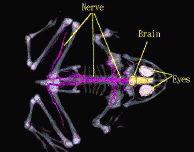
Learn about the insides of a frog without actually dissecting one. Great for middle school and high school students.
Online Frog Identification Guides British Columbia Frogs &Amphibians.Connecticut AmphibiansGeorgia Frogs & ToadsGreat Lakes FrogsKentucky Frogs & ToadsMinnesota Frogs and ToadsBox Turtle
Fact sheet from BioKids.
BIRDS
Eye Catching Water BirdsAnhingaGreat EgretGreat Blue HeronSnowy Egret

Play the echolocation game, try some fun crosswords and word searches, and do some puzzles -- you're just getting started with this fun site that's all about bats.
Talk About Your Learning
How is this area similar to where you have explored before, and how is it different?
Was there anything you saw today you hadn’t seen before? What was your favorite part of this exploration?
What did you notice about human impact on these ecosystems?
More or less than you expected?
What was one thing you saw that surprised you? Why?

